Moira Butterfield's Blog, page 49
June 26, 2016
Picture book differences between the main bookshop chains in the US and UK - Paeony Lewis
Last month I was in the USA and naturally I looked at picture books in shops. How could I not?! This included Barnes & Noble bookstores in three states. As a major chain I assumed Barnes & Noble in the US would be very similar to Waterstones in the UK. Yes and no. I began to notice there were some differences between the US and UK picture-book sections and I thought I'd share my unscientific observations. Of course I haven't forgotten there are lots of brilliant independent bookstores in both countries but they don't have to follow standardised directives from Head Office and so they're more individual and can't be compared in the same way.
 Barnes & Noble in the US
Barnes & Noble in the US
The main picture book section was made up of hardbacks.
Selected books are front facing and the rest are spine outwards.
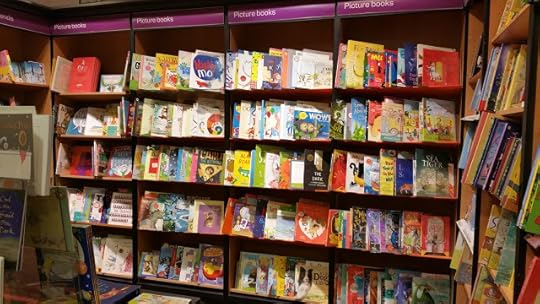 Waterstones in the UK
Waterstones in the UK
Most picture books are paperbacks and they're displayed sideways
because the spine of a paperback is insignificant.
To me the biggest difference was the dominance of hardback picture books (with jackets) in Barnes & Noble. I’d love a knowledgeable person to explain to me why there's such an emphasis on hardbacks in the US. I’m truly baffled and appreciate there must be a reason. Perhaps it's because hardbacks have shelf presence and you can easily read the spine. They’re substantial and feel gorgeous, especially with decorative endpapers. Unfortunately though, US picture book hardbacks are typically $17.99 (c£12) which is expensive for an everyday item. So are they mainly purchased as gifts? Does this mean Americans buy fewer picture books or do they simply spend more? A British paperback picture book is typically £6.99 (c$10), and special offers often lower this further. So per family, do we buy more picture books in the UK? I've no idea, although I'm told the US doesn't have the equivalent of Book Start.
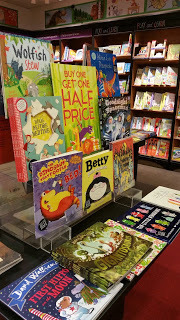 Waterstones UK
Waterstones UK
Paperback discounts: '3 for 2'
and 'Buy 1 get 1 half price'
are always popular.
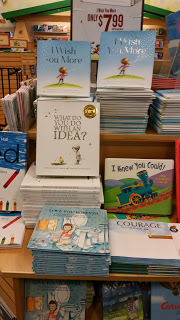 Barnes & Noble US
Barnes & Noble US
A rare price reduction.
Both US and UK have
loyalty schemes.With the majority of picture books in Barnes & Noble being pricey hardbacks, I wonder if this discourages the adult from allowing the child to pick a book that might not appeal to the parent? Also, I noticed many of the hardbacks seemed aimed at older children and perhaps this is a sign that in the US picture books aren’t cast aside (by adults – never children) when the child reaches five years. I wish the reading of picture books by older children was encouraged more in the UK. I don't think many British parents realise how sophisticated picture books can be and how they promote discussion.
Despite the plethora of love books, funny books and moral themes in Barnes & Noble, I noticed a ‘grumpiness’ theme too. That surprised me. I remember submitting a ‘grumpy’ book in the UK a few years ago and received feedback that the grumpy adult hippo was too irresponsible in terms of caring for the little hippo. Perhaps I was unknowingly following a grumpy, humorous American zeitgeist! In fact, more than in the UK, I thought quite a few US books seemed to push way beyond the boundaries of cute and cuddly, with exaggerated humour that often poked fun at poor parenting (more so than in the UK). Plus the style of many illustrations wasn't quite the same as in the UK (often more cartoony in an adult way - though it's hard to put my finger on it).
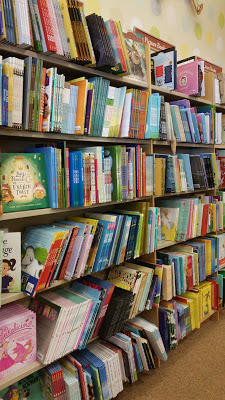 B&N US
B&N US
More picture book shelves from another B&N.
Lots of hardback picture books squeezed onto the shelves and the hardback spines allow for identification.
With only a spine I assume the title must be even more important. To me the lack of front-facing books
doesn't seem to encourage browsing, but they can squeeze more books on the shelves.
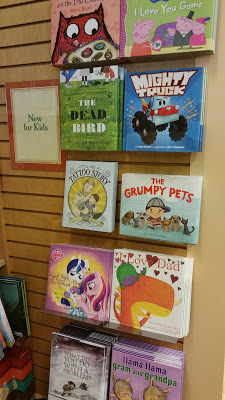 B&N US
B&N US
It's much easier to make a choice when the covers can be seen.
Visibility is a perennial problem for picture books.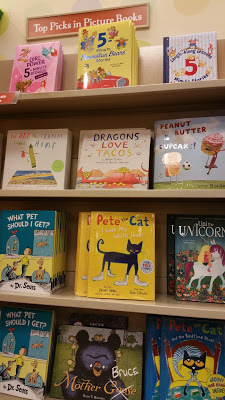 B&N US
B&N US
Rhyming picture books used to be much more popular with publishers in the US than UK. I suspect that was because the US internal market is huge and they didn’t worry about overseas co-editions and translations as much as UK publishers. So in the US there has always been a high number of rhyming picture books and Dr Seuss continues to remain far more prominent than in the UK. Meanwhile in the UK, rhyme is still growing on the back of the phenomenal success of Julia Donaldson. Nowadays every Waterstones in the UK appears to have a large section devoted to Julia Donaldson's rhyming picture books, but I didn’t see this in Barnes & Noble in the US and only noticed one of her books: The Gruffalo. Instead, the author with the most shelf space in the US Barnes & Nobles appeared to be Mo Williems. We enjoy his Pigeon books in the UK (eg Don't Let the Pigeon Drive the Bus), though his other humorous books haven’t taken off in the UK in the same way as in the US.
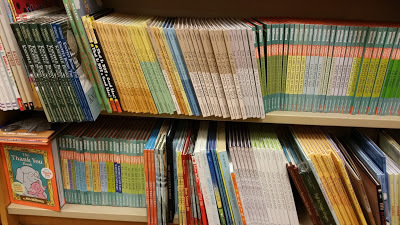 B&N US The author with the most shelf space was Mo Williems.
B&N US The author with the most shelf space was Mo Williems.
More than two thirds of the books in this photo are by this author/illustrator.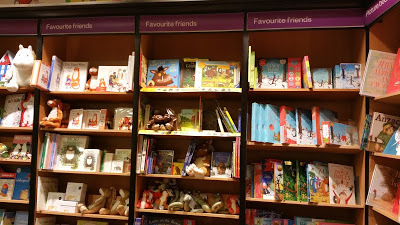 Waterstones UK I suspect you can guess the author with the most shelf space in the UK!
Waterstones UK I suspect you can guess the author with the most shelf space in the UK!
Two thirds of this photo is linked to Julia Donaldson (books and merchandise).
Now it’s time for my greatest befuddlement. Why do almost all the American hardbacks in Barnes & Noble have flimsy, tearable, non-child-friendly jackets? Am I the only one who thinks this is madness?! I know some UK publishers add jackets to hardbacks too, but not to the same extent. And now I’ve thought about it, the lovely hardback versions of my No More Yawning and No More Biscuits didn’t have jackets in the UK, but they did in the US.
I wonder what happens to these jackets? Do American parents remove the jackets when they get them home? Or are the jacketed hardbacks kept on a special shelf in case they’re damaged? Are additional jackets still run off the printing press so booksellers have extras (which need to be stored). It’s beyond me – please will somebody explain!!
I’ll stop ranting and move on to something I liked: the Little Books for Little Hands section in Barnes & Noble that's aimed at 0-3 years. The title of the section says it all. They’re robust board books of classic, truncated and new stories and are strongly constructed for children to handle (chew, stomp, pull, share...). I thought this section was larger than the board book section you’ll find in a UK Waterstones. Perhaps it's to make up for the plethora of pricey US hardbacks?
 B&N US: 'Little Books for Little Hands' 0-3 years
B&N US: 'Little Books for Little Hands' 0-3 years
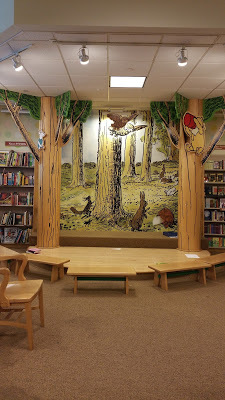 The B&N stores in three different states all included
The B&N stores in three different states all included
the same stage in the children's section.
A lovely idea for events to bring in customers, though perhaps US stores have more space than Waterstones in the UK? I wasn't so wild about all the toys sold in Barnes & Noble stores and they're far more appealing to young children's than rows of hardbacks with just the spines on show.
I wasn't so wild about all the toys sold in Barnes & Noble stores and they're far more appealing to young children's than rows of hardbacks with just the spines on show.
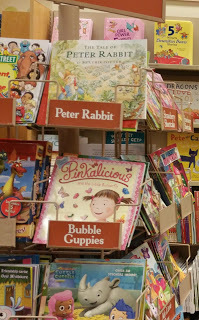
Also new to me at Barnes & Noble were the small, cheap paperback versions of picture books (smaller than typical paperback picture books in the UK). Proportionately there weren't many of these and they were displayed on one or two revolving stands with covers facing outwards.The selection isn’t large and seems to be aimed more at young children reading for themselves. Series and classic bestseller books appear to predominate and my latest US version of I’ll Always Love You is the right size to fit into these stands (ie squarer and smaller than normal picture books).
Whatever my comments, I enjoyed perusing the bookshops in the US and I apologise for not buying many picture books but my suitcase was already stuffed (it didn't help that I was a nut case who brought a full-size pillow along on my travels!). Even so, I couldn’t leave empty handed and squeezed in four books. Only one of those four books may be found on the shelves of Waterstones in the UK (Goodnight Moon), though most could be ordered.
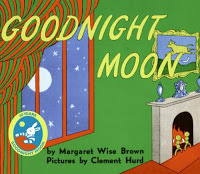 At an independent US bookstore I bought a paperback of the 1947 American classic, Goodnight Moon by Margaret Wise Brown, illus by Clement Hurd (interestingly, the small independent store in North Carolina had a few more of the paperbacks we’re used to in the UK). Published by Harper Trophy
At an independent US bookstore I bought a paperback of the 1947 American classic, Goodnight Moon by Margaret Wise Brown, illus by Clement Hurd (interestingly, the small independent store in North Carolina had a few more of the paperbacks we’re used to in the UK). Published by Harper Trophy
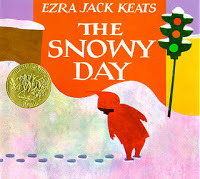 Whilst at the Library of Congress in Washington DC I spotted a paperback of the classic The Snowy Day by Ezra Jack Keats. This book was new to me and in 1962 it was a ground-breaking US picture book in that it portrayed a realistic, multicultural urban setting. Published by Puffin Books
Whilst at the Library of Congress in Washington DC I spotted a paperback of the classic The Snowy Day by Ezra Jack Keats. This book was new to me and in 1962 it was a ground-breaking US picture book in that it portrayed a realistic, multicultural urban setting. Published by Puffin Books
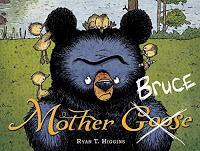 I couldn't resist this hardback from Barnes & Noble. Mother Bruce by Ryan T Higgins really made me giggle. It's about responsibility and so utterly grumpy and naughty! Published by Disney Hyperion in 2015
I couldn't resist this hardback from Barnes & Noble. Mother Bruce by Ryan T Higgins really made me giggle. It's about responsibility and so utterly grumpy and naughty! Published by Disney Hyperion in 2015
 Another hardback from Barnes & Noble. When Spring Comes by Kevin Henkes, illus by Laura Dronzek. I bought this purely for the gorgeous bold illustrations. Published by Greenwillow in 2016I’m somebody who’ll always buy books, whether they’re US hardbacks or cheaper UK paperbacks. Unfortunately this isn’t true of everybody which is why I’m not sure it helps if the newest and most diverse books can only be found in an expensive hardback format in Barnes & Noble bookstores in the US. Would Barnes & Noble make more money if they sold more paperbacks and displayed them cover outwards as is done in Waterstones? Or is the main profit in hardbacks? Regardless, I suspect we'll all agree it should be a priority to get more children reading more picture books, and for adults to enjoy spending time sharing the books.
Another hardback from Barnes & Noble. When Spring Comes by Kevin Henkes, illus by Laura Dronzek. I bought this purely for the gorgeous bold illustrations. Published by Greenwillow in 2016I’m somebody who’ll always buy books, whether they’re US hardbacks or cheaper UK paperbacks. Unfortunately this isn’t true of everybody which is why I’m not sure it helps if the newest and most diverse books can only be found in an expensive hardback format in Barnes & Noble bookstores in the US. Would Barnes & Noble make more money if they sold more paperbacks and displayed them cover outwards as is done in Waterstones? Or is the main profit in hardbacks? Regardless, I suspect we'll all agree it should be a priority to get more children reading more picture books, and for adults to enjoy spending time sharing the books.
By the way, if anybody would like to put me right on the differences I've noticed between the UK and US, it'll be lovely to read your comments. Thanks.
 Paeony Lewis
Paeony Lewis
www.paeonylewis.com
 Barnes & Noble in the US
Barnes & Noble in the USThe main picture book section was made up of hardbacks.
Selected books are front facing and the rest are spine outwards.
 Waterstones in the UK
Waterstones in the UKMost picture books are paperbacks and they're displayed sideways
because the spine of a paperback is insignificant.
To me the biggest difference was the dominance of hardback picture books (with jackets) in Barnes & Noble. I’d love a knowledgeable person to explain to me why there's such an emphasis on hardbacks in the US. I’m truly baffled and appreciate there must be a reason. Perhaps it's because hardbacks have shelf presence and you can easily read the spine. They’re substantial and feel gorgeous, especially with decorative endpapers. Unfortunately though, US picture book hardbacks are typically $17.99 (c£12) which is expensive for an everyday item. So are they mainly purchased as gifts? Does this mean Americans buy fewer picture books or do they simply spend more? A British paperback picture book is typically £6.99 (c$10), and special offers often lower this further. So per family, do we buy more picture books in the UK? I've no idea, although I'm told the US doesn't have the equivalent of Book Start.
 Waterstones UK
Waterstones UKPaperback discounts: '3 for 2'
and 'Buy 1 get 1 half price'
are always popular.
 Barnes & Noble US
Barnes & Noble USA rare price reduction.
Both US and UK have
loyalty schemes.With the majority of picture books in Barnes & Noble being pricey hardbacks, I wonder if this discourages the adult from allowing the child to pick a book that might not appeal to the parent? Also, I noticed many of the hardbacks seemed aimed at older children and perhaps this is a sign that in the US picture books aren’t cast aside (by adults – never children) when the child reaches five years. I wish the reading of picture books by older children was encouraged more in the UK. I don't think many British parents realise how sophisticated picture books can be and how they promote discussion.
Despite the plethora of love books, funny books and moral themes in Barnes & Noble, I noticed a ‘grumpiness’ theme too. That surprised me. I remember submitting a ‘grumpy’ book in the UK a few years ago and received feedback that the grumpy adult hippo was too irresponsible in terms of caring for the little hippo. Perhaps I was unknowingly following a grumpy, humorous American zeitgeist! In fact, more than in the UK, I thought quite a few US books seemed to push way beyond the boundaries of cute and cuddly, with exaggerated humour that often poked fun at poor parenting (more so than in the UK). Plus the style of many illustrations wasn't quite the same as in the UK (often more cartoony in an adult way - though it's hard to put my finger on it).
 B&N US
B&N USMore picture book shelves from another B&N.
Lots of hardback picture books squeezed onto the shelves and the hardback spines allow for identification.
With only a spine I assume the title must be even more important. To me the lack of front-facing books
doesn't seem to encourage browsing, but they can squeeze more books on the shelves.
 B&N US
B&N USIt's much easier to make a choice when the covers can be seen.
Visibility is a perennial problem for picture books.
 B&N US
B&N USRhyming picture books used to be much more popular with publishers in the US than UK. I suspect that was because the US internal market is huge and they didn’t worry about overseas co-editions and translations as much as UK publishers. So in the US there has always been a high number of rhyming picture books and Dr Seuss continues to remain far more prominent than in the UK. Meanwhile in the UK, rhyme is still growing on the back of the phenomenal success of Julia Donaldson. Nowadays every Waterstones in the UK appears to have a large section devoted to Julia Donaldson's rhyming picture books, but I didn’t see this in Barnes & Noble in the US and only noticed one of her books: The Gruffalo. Instead, the author with the most shelf space in the US Barnes & Nobles appeared to be Mo Williems. We enjoy his Pigeon books in the UK (eg Don't Let the Pigeon Drive the Bus), though his other humorous books haven’t taken off in the UK in the same way as in the US.
 B&N US The author with the most shelf space was Mo Williems.
B&N US The author with the most shelf space was Mo Williems.More than two thirds of the books in this photo are by this author/illustrator.
 Waterstones UK I suspect you can guess the author with the most shelf space in the UK!
Waterstones UK I suspect you can guess the author with the most shelf space in the UK!Two thirds of this photo is linked to Julia Donaldson (books and merchandise).
Now it’s time for my greatest befuddlement. Why do almost all the American hardbacks in Barnes & Noble have flimsy, tearable, non-child-friendly jackets? Am I the only one who thinks this is madness?! I know some UK publishers add jackets to hardbacks too, but not to the same extent. And now I’ve thought about it, the lovely hardback versions of my No More Yawning and No More Biscuits didn’t have jackets in the UK, but they did in the US.
I wonder what happens to these jackets? Do American parents remove the jackets when they get them home? Or are the jacketed hardbacks kept on a special shelf in case they’re damaged? Are additional jackets still run off the printing press so booksellers have extras (which need to be stored). It’s beyond me – please will somebody explain!!
I’ll stop ranting and move on to something I liked: the Little Books for Little Hands section in Barnes & Noble that's aimed at 0-3 years. The title of the section says it all. They’re robust board books of classic, truncated and new stories and are strongly constructed for children to handle (chew, stomp, pull, share...). I thought this section was larger than the board book section you’ll find in a UK Waterstones. Perhaps it's to make up for the plethora of pricey US hardbacks?
 B&N US: 'Little Books for Little Hands' 0-3 years
B&N US: 'Little Books for Little Hands' 0-3 years
 The B&N stores in three different states all included
The B&N stores in three different states all includedthe same stage in the children's section.
A lovely idea for events to bring in customers, though perhaps US stores have more space than Waterstones in the UK?
 I wasn't so wild about all the toys sold in Barnes & Noble stores and they're far more appealing to young children's than rows of hardbacks with just the spines on show.
I wasn't so wild about all the toys sold in Barnes & Noble stores and they're far more appealing to young children's than rows of hardbacks with just the spines on show.
Also new to me at Barnes & Noble were the small, cheap paperback versions of picture books (smaller than typical paperback picture books in the UK). Proportionately there weren't many of these and they were displayed on one or two revolving stands with covers facing outwards.The selection isn’t large and seems to be aimed more at young children reading for themselves. Series and classic bestseller books appear to predominate and my latest US version of I’ll Always Love You is the right size to fit into these stands (ie squarer and smaller than normal picture books).
Whatever my comments, I enjoyed perusing the bookshops in the US and I apologise for not buying many picture books but my suitcase was already stuffed (it didn't help that I was a nut case who brought a full-size pillow along on my travels!). Even so, I couldn’t leave empty handed and squeezed in four books. Only one of those four books may be found on the shelves of Waterstones in the UK (Goodnight Moon), though most could be ordered.
 At an independent US bookstore I bought a paperback of the 1947 American classic, Goodnight Moon by Margaret Wise Brown, illus by Clement Hurd (interestingly, the small independent store in North Carolina had a few more of the paperbacks we’re used to in the UK). Published by Harper Trophy
At an independent US bookstore I bought a paperback of the 1947 American classic, Goodnight Moon by Margaret Wise Brown, illus by Clement Hurd (interestingly, the small independent store in North Carolina had a few more of the paperbacks we’re used to in the UK). Published by Harper Trophy Whilst at the Library of Congress in Washington DC I spotted a paperback of the classic The Snowy Day by Ezra Jack Keats. This book was new to me and in 1962 it was a ground-breaking US picture book in that it portrayed a realistic, multicultural urban setting. Published by Puffin Books
Whilst at the Library of Congress in Washington DC I spotted a paperback of the classic The Snowy Day by Ezra Jack Keats. This book was new to me and in 1962 it was a ground-breaking US picture book in that it portrayed a realistic, multicultural urban setting. Published by Puffin Books I couldn't resist this hardback from Barnes & Noble. Mother Bruce by Ryan T Higgins really made me giggle. It's about responsibility and so utterly grumpy and naughty! Published by Disney Hyperion in 2015
I couldn't resist this hardback from Barnes & Noble. Mother Bruce by Ryan T Higgins really made me giggle. It's about responsibility and so utterly grumpy and naughty! Published by Disney Hyperion in 2015 Another hardback from Barnes & Noble. When Spring Comes by Kevin Henkes, illus by Laura Dronzek. I bought this purely for the gorgeous bold illustrations. Published by Greenwillow in 2016I’m somebody who’ll always buy books, whether they’re US hardbacks or cheaper UK paperbacks. Unfortunately this isn’t true of everybody which is why I’m not sure it helps if the newest and most diverse books can only be found in an expensive hardback format in Barnes & Noble bookstores in the US. Would Barnes & Noble make more money if they sold more paperbacks and displayed them cover outwards as is done in Waterstones? Or is the main profit in hardbacks? Regardless, I suspect we'll all agree it should be a priority to get more children reading more picture books, and for adults to enjoy spending time sharing the books.
Another hardback from Barnes & Noble. When Spring Comes by Kevin Henkes, illus by Laura Dronzek. I bought this purely for the gorgeous bold illustrations. Published by Greenwillow in 2016I’m somebody who’ll always buy books, whether they’re US hardbacks or cheaper UK paperbacks. Unfortunately this isn’t true of everybody which is why I’m not sure it helps if the newest and most diverse books can only be found in an expensive hardback format in Barnes & Noble bookstores in the US. Would Barnes & Noble make more money if they sold more paperbacks and displayed them cover outwards as is done in Waterstones? Or is the main profit in hardbacks? Regardless, I suspect we'll all agree it should be a priority to get more children reading more picture books, and for adults to enjoy spending time sharing the books.By the way, if anybody would like to put me right on the differences I've noticed between the UK and US, it'll be lovely to read your comments. Thanks.
 Paeony Lewis
Paeony Lewiswww.paeonylewis.com
Published on June 26, 2016 23:00
June 19, 2016
Thesaurus Addict by Jane Clarke
When I’m beginning to think about a picture book story, I go straight to a thesaurus and look up the main words that have popped into my mind. It will often send me off in a totally different direction, or give an extra depth to a story.
It’s my version of what Michelle does:one-word-one-hundred-ways
I do use an online thesaurus, but my favourite is still my old Collin’s thesaurus that I bought when I started writing 20 years ago. Yes, it is mine, borrowed by my son when he was studying English for the International Baccalaureate.
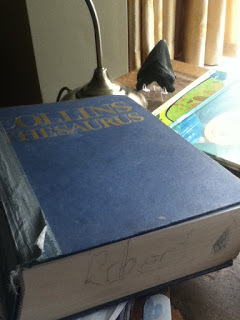
I also love The Usbourne Illustrated Thesaurus for children - I bought it for me, not for my sons...
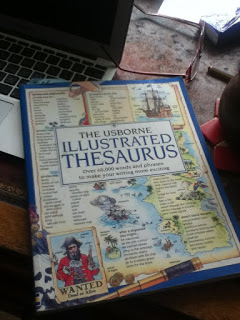
It has fab, often inspirational illustrated entries, like this one on fire. Some, like for ‘fantasy’, ‘pirates’ and ‘space’ have full page illustrations.
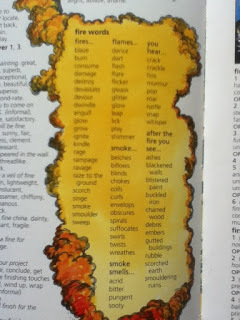
In a great article called “ Everything You Need to Know About Writing Successfully – in Ten Minutes,” Stephen King has, as his rule number 5
Never look at a reference book while doing a first draft
stephen-king-everything-you-need-to-know-about-writing
Yep! I’d agree, I only use reference books during the thinking, brain storming, note-making process. I don’t stop to check anything while writing a first draft.
But Stephen King also advises
"Better yet, throw your thesaurus into the wastebasket."
Nooo-ooo! I think that would be a terrible
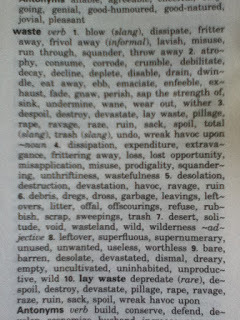
What do you think?
Jane's new book is the fifth in the Dr KittyCat series, artwork by Richard Byrne and Shutterstock.
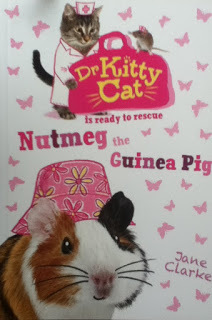 Jane's website
Jane's website
Published on June 19, 2016 23:00
June 13, 2016
Picture books and trying to help instil greater empathy, taking responsibility and understanding of consent from a young age. Thoughts in the wake of the Stanford sexual assault case by Juliet Clare Bell
“Even if the sentence is light, hopefully this will wake people up,” she said. “I want the judge to know that he ignited a tiny fire. If anything, this is a reason for all of us to speak even louder.”
I’m going out on a limb a bit today. I will bring it back to picture books at the end, because
"Reading fiction... gives us the ability to feel empathy for people we've never met, living lives we couldn't possibly experience for ourselves, because the book puts us inside the character's skin," Ann Patchett
but I want to talk about something I’ve been thinking about a lot this week: the powerful impact statement written and read out by a woman at the sentencing hearing for a young man in the US who sexually assaulted her. Found guilty of three serious offences and never admitting his guilt, the perpetrator was given a six-month sentence.
This is my attempt at speaking even louder, bearing in mind that this is a picture book site…
The story surrounding this case has really struck a chord with me. There were definitely some similarities between the woman’s story and my own. I too was subjected to “twenty minutes of action” (as the father referred to his son’s behaviour in the current case) which also turned my whole world upside down; I was rescued by two strangers who chased after and caught/helped the police catch the perpetrator even before I was picked up and taken off to The Rape Suite for a night of invasive examinations, blood tests, injections and endless questioning. And my attacker also claimed not to have any recollection of the incident (having been high on drugs). But the similarities end there.
People of my age can probably remember the Chris Morris Brass Eye black comedy sketch about ‘Good Aids’ (those who contracted HIV through infected blood transfusions) and ‘Bad Aids’ (from homosexual sex). Well, so it seems there’s ‘Good Rape/Assault’ and ‘Bad Rape/Assault’. ‘Good’ involves a stranger, the victim wearing dowdy clothes and having drunk no alcohol and taken no drugs. Oh, and definitely not being a prostitute. ‘Bad’, on the other hand, involves a woman having drunk alcohol/taken drugs, knowing or having at least met the perpetrator, the woman wearing ‘provocative’ clothes, and/or quite possibly, being sexual promiscuous or even a prostitute. Both the ‘good’ and the ‘bad’ involve a man raping/assaulting a woman (or man).
My experience definitely fell into the ‘good’ category. Even whilst I was in shock and being examined by the police doctor that night, I was aware of the unfairness of the system as the doctor reassured me that it was a very good thing –as long as the tests backed up my statement, of course- as I’d not drunk any alcohol or taken any drugs. And I’d clearly been wearing dowdy clothes (including my great aunt’s unfashionable, but warm, coat) as I walked home –I could see they believed I hadn’t been ‘asking for it’. “Most of the women I examine are prostitutes,” said the doctor, conspiratorially. Even then, I felt the unfairness of being treated with a respect that other women probably weren’t getting.
Why should it have mattered if I had been drinking? (I might well have drunk –I’d been at a social event, but for some reason I can’t remember I happen not to have drunk anything that night.) Why should it have changed anything if I’d been dressed up? And why should someone attacking me have been less serious if I had been a prostitute?
Although my attacker entered a plea of not guilty whilst on remand (because he claimed he couldn’t remember the event), he changed his plea on the day of the court case. As a result, the judge reduced his sentence (for not putting me through the trauma of a court case -and also because of the defendant’s own traumatic childhood), from about nine years, to five. This is the judge for whom the police had a nickname because he was so lenient (they warned me in court when they saw who it was that the sentence would probably be much shorter than they’d predicted). So a substantially reduced sentence by a judge deemed to be lenient, of five years -compared with six months in the Stanford case. There were no family members arguing the case for my attacker (on the contrary, his step family came to the initial hearing and told my then boyfriend that he should ‘do him over’ for them, and at the final hearing, they clapped when he was sentenced), and he wasn't at university or a strong athlete (he was of no fixed abode and not athletic).
I could talk about the difference in our cases in terms of closure for me, and lack of closure for the woman in the current case –where I wrote to my perpetrator in prison (as did my brother) and he wrote back absolutely accepting full responsibility, saying ‘I was nothing more than an animal and I should have been put down for what I did to you’ and that he’d never cried till he read my letter, and how he’d since decided to take anger management courses in prison even though it meant he’d stay in longer; and how he’d requested to go to a half-way house on his release so he would be supervised. And that he promised that he’d never come back to the city in which he had attacked me so that I could be confident I would never bump into him. This, compared with the current case where the attacker has not accepted any guilt. The turn of events after the attack for me, down to my treatment by the police, the judge, even the defence barrister, as well as the perpetrator admitting full responsibility and being extremely remorseful, made it all much easier to move on from. But that’s not what this post is about.
I wanted to say something about consent, which is what so much of this boils down to. No one was ever going to argue over whether I had consented –I was followed home by a stranger and he was caught literally red-handed (with mostly his own blood from the weapon he’d been holding). I had been asked loads of questions about my sexual history but as they’d established this was never going to be a case of whether I’d given consent or not, I’d not felt worried about those questions being used against me in court. But how grim that the same answers might have been used against another woman where consent had been in question.
I know many women who have been sexually assaulted by men –almost all of them men that they knew –boyfriends, acquaintances, family members. As far as I know, I am the only one who actually went to the police –out of all the people I know who have been assaulted. And as well as fear, this has a lot to do with knowing how incredibly hard it is to get a conviction for someone when lack of consent may be questioned.
So, consent. There’s a great video used by Thames Valley police about consent
Animation courtesy of Emmeline May at rockstardinosaurpirateprincess.com and Blue Seat Studios. Copyright © 2015
But this is not a video to show to young children. So what can we do as picture book authors and illustrators to help children understand about consent and taking responsibility, and empathy from a young age? (And I’m not saying that the man in question in the current case would have done anything differently had he read certain picture books as a child –I don’t know the man and I’m not going to comment on his family here.)
Research is clear that reading stories helps children become more empathic.
Here's an article from the Guardian on the benefits of reading for empathy: http://www.theguardian.com/teacher-network/2015/may/13/reading-teach-children-empathy
"Fiction is not just a simulator of a social experience, it is a social experience," writes psychologist David Comer Kidd, whose paper, Reading Literary Fiction Improves Theory of Mind was published in Science in 2013.
And again:
"Reading fiction... gives us the ability to feel empathy for people we've never met, living lives we couldn't possibly experience for ourselves, because the book puts us inside the character's skin," Ann Patchett.
We need picture books with diverse characters so that all people can see themselves in some books and all people can get a sense of how it might be to be someone else in other books.
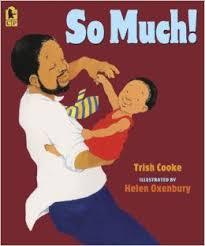
So Much (c) Trish Cooke and Helen Oxenbury
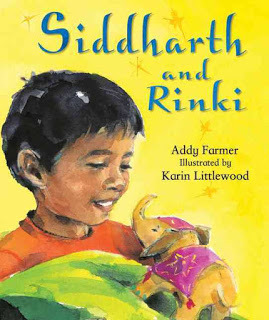
Siddarth and Rinki (c) Addy Farmer and Karin Littlewood
We need strong female characters
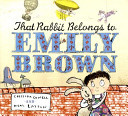
That Rabbit Belongs to Emily Brown (c) Cressida Cowell and Neal Layton
(A video showing a reading of Emily Brown...)
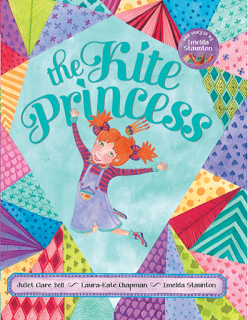
The Kite Princess (c) Juliet Clare Bell and Laura-Kate Chapman
and strong male characters
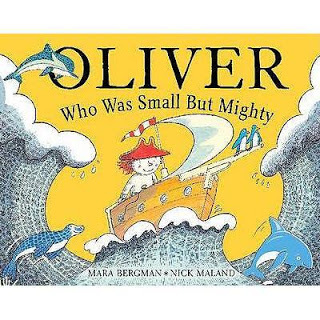 Oliver Who Was Small But Mighty (c) Mara Bergman and Nick Maland
Oliver Who Was Small But Mighty (c) Mara Bergman and Nick Malandincluding ones who do not conform to male stereotypes
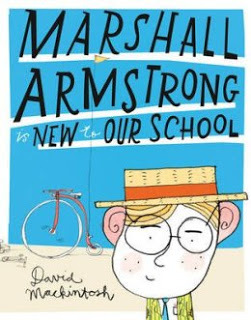
Marshall Armstrong is New to Our School (c) David Mackintosh
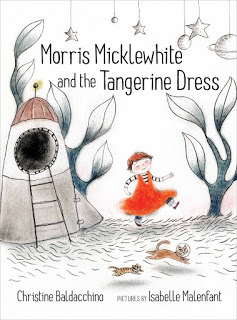 Morris Micklewhite and the Tangerine Dress (c) Christine Baldacchino and Isabelle Malenfant
Morris Micklewhite and the Tangerine Dress (c) Christine Baldacchino and Isabelle MalenfantWe need good picture books about friendship and compassion;
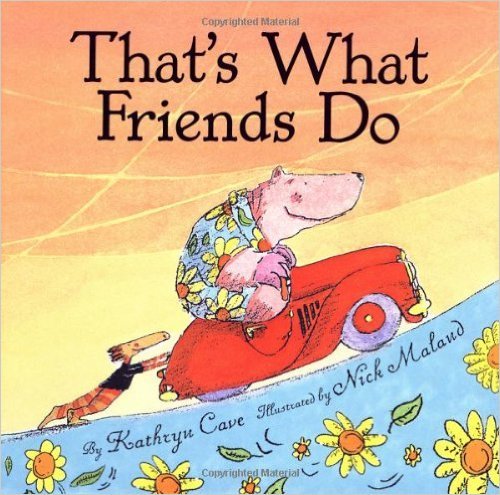
That's What Friends Do (c) Kathryn Cave and Nick Maland
(and a video reading of it)
about compromise
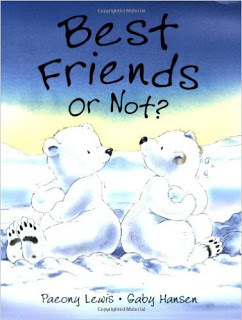
Best Friends or Not? (c) Paeony Lewis and Gaby Hansen
Simple kindness
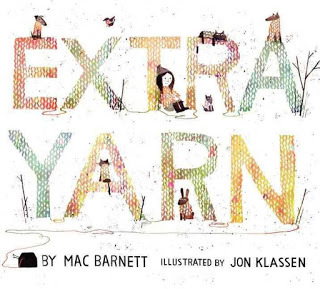 Extra Yarn (c) Mac Barnett and Jon Klassen
Extra Yarn (c) Mac Barnett and Jon Klassen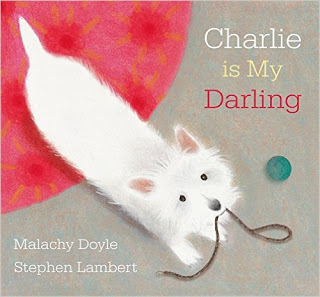
Charlie is My Darling (c) Malachy Doyle and Stephen Lambert
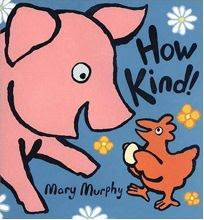
How Kind! (c) Mary Murphy
(and a fab reading of How Kind!)
about unconditional love
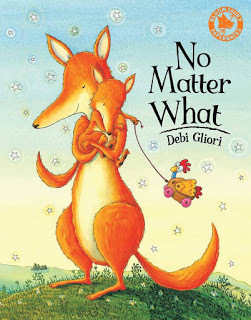
No Matter What (c) Debi Gliori
and about accepting people for who they are.
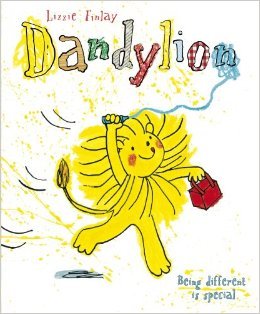
Dandylion (c) Lizzie Finlay
We need picture books with LGBT characters
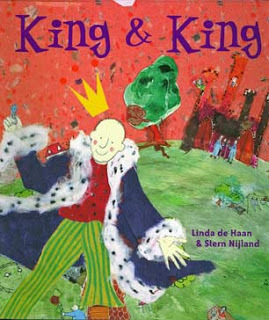
King and King (c) Linda de Haan and Stern Nijland
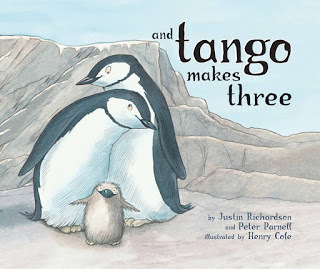
And Tango Makes Three (c) Justin Richardson, Peter Parnell and Henry Cole
And see this Guardian article for more LGBT picture books
We need books with children with disabilities that aren’t about their disabilities.
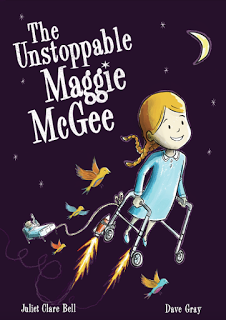
The Unstoppable Maggie McGee (c) Juliet Clare Bell and Dave Gray
We need picture books about bullies and people who are being bullied; standing up to bullies and taking responsibility for your own bad behaviour towards other people...

Little Rabbit Foo Foo (c) Michael Rosen and Arthur Robins
(and a video of it)
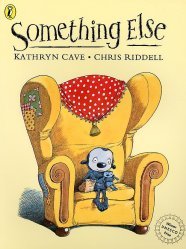
Something Else (c) Kathryn Cave and Chris Riddell
(and a video of it)
and about doing the right thing even when it’s not the easy option
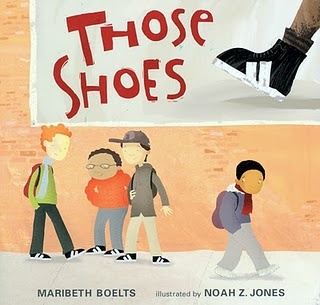
Those Shoes (c) Maribeth Boelts and Noah Z Jones
and about never taking advantage of your greater physical strength to get something from someone without their consent or permission...
only I can't think of a book that does this. Does anyone know of one I can add in here? Please let me know in the comments, below...
And we need books that show how even the small actions of one person can have big consequences for another person, good or bad (humorous over the top books that make us think about cause and effect are really valuable)...
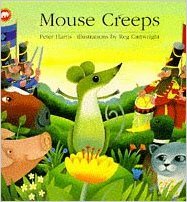
Mouse Creeps (c) Peter Harris and Reg Cartwright
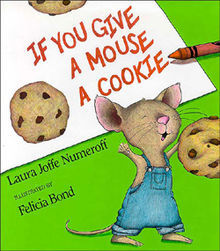
If You Give a Mouse a Cookie (c) Laura Joffe Numeroff and Felicia Bond
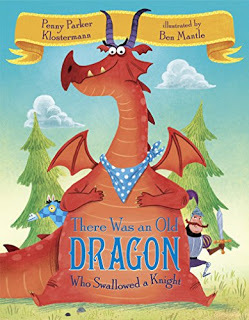
There Was an Old Dragon Who Swallowed a Knight (c) Penny Parker Klosterman and Ben Mantle
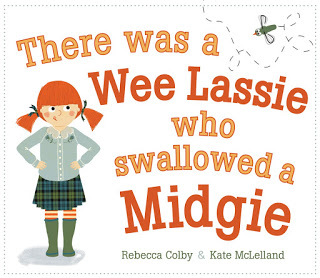 There Was a Wee Lassie Who Swallowed a Midgie (c) Rebecca Colby and Kate McLelland
There Was a Wee Lassie Who Swallowed a Midgie (c) Rebecca Colby and Kate McLellandAnd we need books that show the folly of a misguided sense of entitlement.
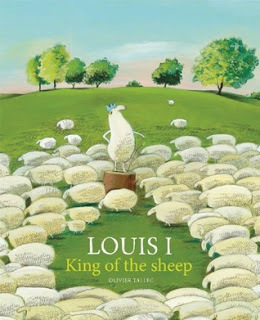
Louis I King of Sheep (c) Olivier Tallac
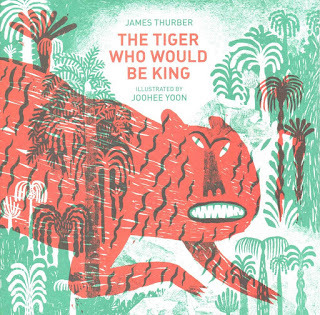
The Tiger Who Would be King (c) James Thurber and Jodhee Yoon
We need books that show children that teasing that is not actively being enjoyed by the subject of the teasing is neither funny nor ok –whether it’s coming from adults or other children. It is categorically not funny if the person in question does not find it funny. This is a really important lesson for understanding consent (can anyone think of a picture book that touches on this?). And we need books about inspirational people. In my author visits for Two Brothers and a Chocolate Factory: the Remarkable Story of Richard and George Cadbury (illustrated by Jess Mikhail), we look at what George and Richard to improve the lives of other people in the community and we think about what we can do to have a positive impact on the people around us.
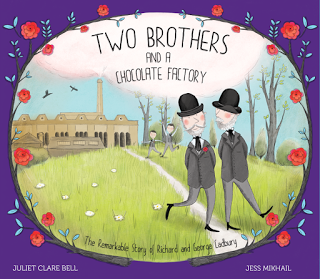
Two Brothers and a Chocolate Factory: The Remarkable Story of Richard and George Cadbury (c) Juliet Clare Bell and Jess Mikhail.
There are many, many picture books that help children to empathise with others, and see the consequences of their actions -and see these posts for more recommendations, and this one, this one from Scholastic, and this excellent list from Book Trust,
-but let's keep making more. Moreover, we need for them to be read by people who may not be picking up these messages from their own environments. So we need our libraries and our librarians and our enthusiastic teachers and educators.
Books alone aren’t going to stop all terrible things happening to people at the hands of other people. But we can play our small part in helping children become more empathic, have more personal responsibility and understand that no means no.
Which picture books would you recommend for encouraging empathy/compassion/respect in the reader? Please leave any recommended books in the comments section below.
Thank you.
Juliet Clare Bell
Published on June 13, 2016 03:04
June 5, 2016
WHAT LIES WITHIN: Cross sections and cutaways in picture books • Jonathan Emmett
Two types of pictures that were guaranteed to hold my attention as a child were cross sections and cutaways. These revealing illustrations offered readers a god-like omniscience allowing them to peek at things that were usually hidden and imparting an understanding of how individual parts or spaces fitted together to form a more complex whole.
If you’re not clear on what the difference is, a cross section is a drawing which shows the view revealed by an imaginary straight line slice through an object, while a cutaway is a drawing in which some external parts have been removed (or ‘cut away’) to reveal the interior. Many of the drawings featured in “cross section” books are actually cutaways.
One illustrator who did a great deal to popularise cutaways was Leslie Ashwell Wood. Although perhaps best know for the hundreds of cutaways he created for the Eagle comic in the 1950s and 60s, Wood also produced a series of Inside Information books including this one featuring cutaways of space craft, which I spent many hours poring over as a child.
 Inside Information on Space Travel was part of a series of twelve
Inside Information on Space Travel was part of a series of twelve
Inside Information cutaway books illustrated by Leslie Ashwell Wood
There was a quite a craze for cross sections and cutaway books in the 1990s*, perhaps most notably the Incredible Cross Section series illustrated by Stephen Biesty.
 Stephen Biesty’s intricately detailed exploded cutaway through the Colosseum from
Stephen Biesty’s intricately detailed exploded cutaway through the Colosseum from
Rome in Spectacular Cross-Section with text by Andrew Solway.
While Biesty’s drawings revealed the hidden intricacies of the real world, past and present, other illustrators began to produce equally detailed cross sections and cutaways based on the fictional worlds of films and TV shows. In 1998 Dorling Kindersley published Star Wars: Incredible Cross-Sections, illustrated by Hans Jensen and Richard Chasemore and written by David West Reynolds. Hans Jenssen’s Millennium Falcon cutaway from Star Wars: Incredible Cross-Sections.
Hans Jenssen’s Millennium Falcon cutaway from Star Wars: Incredible Cross-Sections.
Since then everything from the Thunderbirds' rescue craft to Wallace and Gromit’s motorbike and sidecar has been laid bare in cutaway or cross section form.
An amusing variation on the genre is Alan Snow’s How Things Really Work series which purports to show the mechanical interior workings of familiar creatures.
 A cross section though a Stegosaurus from Alan Snow’s How Dinosuars Really Work.
A cross section though a Stegosaurus from Alan Snow’s How Dinosuars Really Work.
Although some of the books featured above contain fictional content, none of them are story books, so I thought I’d finish off by looking at some picture books that incorporate cross-sections and cutaways into a narrative.
Now that you know what a fan I am, you probably won’t be surprised to learn that cross sections and cutaways occasionally pop up in the picture books I've written, such as this wonderfully detailed crocodile-submarine gatefold that Steve Cox created for The Treasure of Captain Claw .
 Captain Claw's crocodile-like submarine (click here to see a larger version).
Captain Claw's crocodile-like submarine (click here to see a larger version).
Chris Riddell’s cutaway drawing for Pirate Diary, written by Richard Platt, allows readers to explore the ship on which the story is set …

… as does this Noah’s Ark cross section (made from plasticine!) by Barbara Reid for her picture book Two By Two.

But no post about cross sections and cutaways in picture books would be complete without a mention of the two Full Moon books – Full Moon Soup and Full Moon Afloat – by Alistair Graham. These are both wordless picture books in which the story is told in a sequence of twelve comically detailed cross sections populated by a cast of increasingly weird and wonderful characters. In Full Moon Soup the eponymous magical potion results in a Fawlty-Towers-like hotel going from this at the start of the book …

… to this by the end.
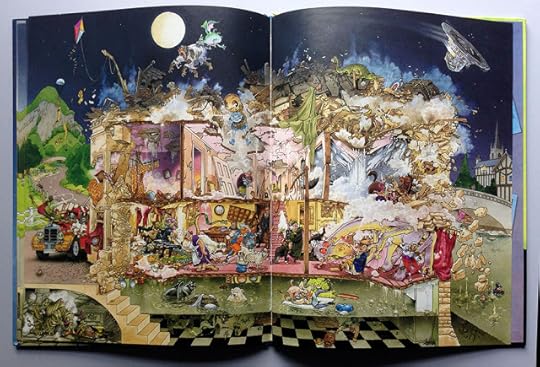
I hope you've enjoyed this 'slice' of some of my favourite picture book cross sections and cutaways. If you have any favourites of your own, I’d love to hear about them in the comments box below.
* Fellow Picture Book Den author Moira Butterfield wrote the text for several of them!
 The submarine cross section featured above is taken from The Treasure of Captain Claw, by Jonathan Emmett and Steve Cox and published by Orchard Books.
The submarine cross section featured above is taken from The Treasure of Captain Claw, by Jonathan Emmett and Steve Cox and published by Orchard Books.
Find out more about Jonathan and his books at his Scribble Street web site or his blog. You can also follow Jonathan on Facebook and Twitter @scribblestreet.
See all of Jonathan's posts for Picture Book Den.
If you’re not clear on what the difference is, a cross section is a drawing which shows the view revealed by an imaginary straight line slice through an object, while a cutaway is a drawing in which some external parts have been removed (or ‘cut away’) to reveal the interior. Many of the drawings featured in “cross section” books are actually cutaways.
One illustrator who did a great deal to popularise cutaways was Leslie Ashwell Wood. Although perhaps best know for the hundreds of cutaways he created for the Eagle comic in the 1950s and 60s, Wood also produced a series of Inside Information books including this one featuring cutaways of space craft, which I spent many hours poring over as a child.
 Inside Information on Space Travel was part of a series of twelve
Inside Information on Space Travel was part of a series of twelveInside Information cutaway books illustrated by Leslie Ashwell Wood
There was a quite a craze for cross sections and cutaway books in the 1990s*, perhaps most notably the Incredible Cross Section series illustrated by Stephen Biesty.
 Stephen Biesty’s intricately detailed exploded cutaway through the Colosseum from
Stephen Biesty’s intricately detailed exploded cutaway through the Colosseum fromRome in Spectacular Cross-Section with text by Andrew Solway.
While Biesty’s drawings revealed the hidden intricacies of the real world, past and present, other illustrators began to produce equally detailed cross sections and cutaways based on the fictional worlds of films and TV shows. In 1998 Dorling Kindersley published Star Wars: Incredible Cross-Sections, illustrated by Hans Jensen and Richard Chasemore and written by David West Reynolds.
 Hans Jenssen’s Millennium Falcon cutaway from Star Wars: Incredible Cross-Sections.
Hans Jenssen’s Millennium Falcon cutaway from Star Wars: Incredible Cross-Sections. Since then everything from the Thunderbirds' rescue craft to Wallace and Gromit’s motorbike and sidecar has been laid bare in cutaway or cross section form.
An amusing variation on the genre is Alan Snow’s How Things Really Work series which purports to show the mechanical interior workings of familiar creatures.
 A cross section though a Stegosaurus from Alan Snow’s How Dinosuars Really Work.
A cross section though a Stegosaurus from Alan Snow’s How Dinosuars Really Work. Although some of the books featured above contain fictional content, none of them are story books, so I thought I’d finish off by looking at some picture books that incorporate cross-sections and cutaways into a narrative.
Now that you know what a fan I am, you probably won’t be surprised to learn that cross sections and cutaways occasionally pop up in the picture books I've written, such as this wonderfully detailed crocodile-submarine gatefold that Steve Cox created for The Treasure of Captain Claw .
 Captain Claw's crocodile-like submarine (click here to see a larger version).
Captain Claw's crocodile-like submarine (click here to see a larger version).Chris Riddell’s cutaway drawing for Pirate Diary, written by Richard Platt, allows readers to explore the ship on which the story is set …

… as does this Noah’s Ark cross section (made from plasticine!) by Barbara Reid for her picture book Two By Two.

But no post about cross sections and cutaways in picture books would be complete without a mention of the two Full Moon books – Full Moon Soup and Full Moon Afloat – by Alistair Graham. These are both wordless picture books in which the story is told in a sequence of twelve comically detailed cross sections populated by a cast of increasingly weird and wonderful characters. In Full Moon Soup the eponymous magical potion results in a Fawlty-Towers-like hotel going from this at the start of the book …
… to this by the end.

I hope you've enjoyed this 'slice' of some of my favourite picture book cross sections and cutaways. If you have any favourites of your own, I’d love to hear about them in the comments box below.
* Fellow Picture Book Den author Moira Butterfield wrote the text for several of them!
 The submarine cross section featured above is taken from The Treasure of Captain Claw, by Jonathan Emmett and Steve Cox and published by Orchard Books.
The submarine cross section featured above is taken from The Treasure of Captain Claw, by Jonathan Emmett and Steve Cox and published by Orchard Books.Find out more about Jonathan and his books at his Scribble Street web site or his blog. You can also follow Jonathan on Facebook and Twitter @scribblestreet.
See all of Jonathan's posts for Picture Book Den.
Published on June 05, 2016 22:30
May 29, 2016
Creation or Promotion? Is there time for both? by Abie Longstaff
I've been really busy with work recently. But not with writing; with events.
I love doing author events: school visits, literary festivals and bookshop readings. It gives me a buzz to meet children, hear their ideas, share stories and help them with their creative writing. But it takes its toll. It’s exhausting. There's the panic ofWill my train be on time?Will the school’s technology be compatible with mine? Will anyone come to the bookshop?(see Michelle Robinson’s excellent list of other things to panic about - here)
In day-long school events I might run up to six sessions for Reception to Y6. So when I finally make it home I tend to crumple on the sofa for the rest of the evening.
There’s been a lot of talk about author events in the book world recently, including a fantastic post on author fees by Nicola Morgan, and an article in the Guardian on the budgeting pressures faced by literature festivals.
Pay is an important issue. Events are hard work and we should be compensated fairly for our time. But some events don’t pay (eg bookshop events); while others pay but not quite enough to reflect the work you put in (lit fests). Then there’s the wider question of promotion in general – hours spent (unpaid) on social media, blog posts, press articles.
As authors, how do we balance promotion and creation? How much time should we spend selling the product rather than making it?
Some authors see promotion as very much part of their role. I know a writer who does lots of free events, puts her own money and time into marketing her books and works incredibly hard on promotion. I know another writer who hates promotion – she devotes all her time to writing and, for her, the best way to sell books is simply to write more (and better) books.
There are a growing number of lit fests across the country, umpteen bookshops keen to have an author visit and oodles of book blogs to post on. A writer could spend the entire year doing shows, bookshop readings, articles and guest blogs - but every day spent doing promotion is one fewer in which we could be writing.
How do we know if the time we spend promoting is worth it? And what does ‘worth it’ even mean? There’s the financial angle: selling books, promoting your brand. There’s the enjoyment angle: connecting with children, seeing the impact of your book on the world. There’s also a doing-good factor: maybe you’ll help a child learn to love books, or help a library stay open.
A very wise person, author Liz Kessler, devised a clever 'is it worth it?' formula (her post about it is here). She’s listed the upsides and downsides of events, and devised a scoring system to weigh the pluses against the minuses. You score the following (each has a different maximum value):Sales (S) – out of 10Payment (P) – out of 5Word of mouth W) – out of 3Time (T) – out of 10Cost (C) – out of 3Enjoyment (E)– out of 3Good cause (G), ie where it’s for charity – out of 3
Then her formula goes: (S + P + W) must be greater or equal to (T + C – E – G)
I like Liz’s formula and I often use it when considering doing an event. But of course, it’s just a guide and you have to factor in your personal preferences - for example, because I love doing events I allow myself to score the enjoyment out of a higher number than 3. And I might consider the good cause to be particularly worthy, thus worthy of being allotted more than 3 points. Also - sometimes the value of the event isn’t apparent until after it’s over. A few weeks after one of my lower-selling events I got a letter from a little girl saying how much she loved the book she had bought that day. That alone made it worthwhile.
But the scoring system is a useful guideline and I’ve never come up with a better one.
What about you? How much of your time do you want to devote to promotion?
How do you decide which events, paid or unpaid, to give time to?

I love doing author events: school visits, literary festivals and bookshop readings. It gives me a buzz to meet children, hear their ideas, share stories and help them with their creative writing. But it takes its toll. It’s exhausting. There's the panic ofWill my train be on time?Will the school’s technology be compatible with mine? Will anyone come to the bookshop?(see Michelle Robinson’s excellent list of other things to panic about - here)
In day-long school events I might run up to six sessions for Reception to Y6. So when I finally make it home I tend to crumple on the sofa for the rest of the evening.
There’s been a lot of talk about author events in the book world recently, including a fantastic post on author fees by Nicola Morgan, and an article in the Guardian on the budgeting pressures faced by literature festivals.
Pay is an important issue. Events are hard work and we should be compensated fairly for our time. But some events don’t pay (eg bookshop events); while others pay but not quite enough to reflect the work you put in (lit fests). Then there’s the wider question of promotion in general – hours spent (unpaid) on social media, blog posts, press articles.
As authors, how do we balance promotion and creation? How much time should we spend selling the product rather than making it?
Some authors see promotion as very much part of their role. I know a writer who does lots of free events, puts her own money and time into marketing her books and works incredibly hard on promotion. I know another writer who hates promotion – she devotes all her time to writing and, for her, the best way to sell books is simply to write more (and better) books.
There are a growing number of lit fests across the country, umpteen bookshops keen to have an author visit and oodles of book blogs to post on. A writer could spend the entire year doing shows, bookshop readings, articles and guest blogs - but every day spent doing promotion is one fewer in which we could be writing.
How do we know if the time we spend promoting is worth it? And what does ‘worth it’ even mean? There’s the financial angle: selling books, promoting your brand. There’s the enjoyment angle: connecting with children, seeing the impact of your book on the world. There’s also a doing-good factor: maybe you’ll help a child learn to love books, or help a library stay open.
A very wise person, author Liz Kessler, devised a clever 'is it worth it?' formula (her post about it is here). She’s listed the upsides and downsides of events, and devised a scoring system to weigh the pluses against the minuses. You score the following (each has a different maximum value):Sales (S) – out of 10Payment (P) – out of 5Word of mouth W) – out of 3Time (T) – out of 10Cost (C) – out of 3Enjoyment (E)– out of 3Good cause (G), ie where it’s for charity – out of 3
Then her formula goes: (S + P + W) must be greater or equal to (T + C – E – G)
I like Liz’s formula and I often use it when considering doing an event. But of course, it’s just a guide and you have to factor in your personal preferences - for example, because I love doing events I allow myself to score the enjoyment out of a higher number than 3. And I might consider the good cause to be particularly worthy, thus worthy of being allotted more than 3 points. Also - sometimes the value of the event isn’t apparent until after it’s over. A few weeks after one of my lower-selling events I got a letter from a little girl saying how much she loved the book she had bought that day. That alone made it worthwhile.
But the scoring system is a useful guideline and I’ve never come up with a better one.
What about you? How much of your time do you want to devote to promotion?
How do you decide which events, paid or unpaid, to give time to?

Published on May 29, 2016 23:00
May 23, 2016
ONE WORD, ONE HUNDRED WAYS
by Michelle Robinson
I was busy minding my own business when I found myself copied in on a (non-publishing) person’s question to an illustrator: “Do you think we could just make books without writers now?” The illustrator was just as astonished as me.
Talk about putting the twit in Twitter. Zero marks for knowing your audience, minus ten for understanding picture book chemistry, straight to hell for underestimating the art of the author. That's right, ART.
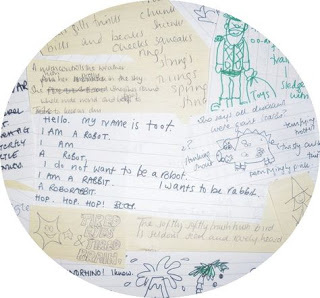 A few snippets from my notebooks.Just because the writing process doesn't lend itself so readily to showboating, doesn't mean we're not crafting away like billy-o. A snapshot of a scribbly, crosshatched notebook may not be as visually pleasing as a sketchbook, neither is it as simple to interpret, but us writers have some serious skills. It's harder to prove it, but then we shouldn't have to.
A few snippets from my notebooks.Just because the writing process doesn't lend itself so readily to showboating, doesn't mean we're not crafting away like billy-o. A snapshot of a scribbly, crosshatched notebook may not be as visually pleasing as a sketchbook, neither is it as simple to interpret, but us writers have some serious skills. It's harder to prove it, but then we shouldn't have to.
We create heroes - and not just on the page. Read our words aloud and you become a joy conjurer, memory maker, child whisperer. We weave the words whispered into waiting ears. " We are the music makers and we are the dreamers of dreams." Perhaps the Twitter twit could do without the likes of O'Shaughnessy, but I'd rather not.
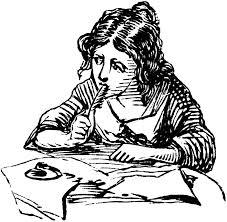 'Please don't mock my rock.'
'Please don't mock my rock.'
So anyway, I thought I'd lay myself bare to ridicule and failure and attempt to showboat.
Finding a story is a bit like finding a gem. In order to dig one out, you must first dig your way through a lot crappy rock. But us writers can't find that gem, can't weave the magic words, without first creating the crappy rock. All of it. From scratch. So here I am, starting from scratch, brainstorming 100 different ways with just one word: ROCK.
ONE HUNDRED WAYS WITH ROCK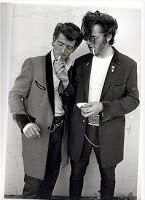 Rockabilly & RockabennyRock on (Tommy).Rock 'n' roll. Rollin' rock. Gathers pace and just can't stop.Rock music.Rock around the clock.Rockabilly.Rockabetty.Rockabenny, too. I like a rockabilly band, how about you?Rockabilly goats gruff.Rockabye baby, on the treetop. Call social services, this must stop.Rocks in your socks.Stick of rock. Stuck of rock. Stack of rock. Rock stock.Crocodile rock.Rockodile.Get your rocks off. (What an odd phrase, honey. Write it down now, need a hundred, wow.)Rocks in your head, heavy as lead. Rocks on your head instead? SPLAT. You're dead.Rock hard.Rock solid.Rock steady crew.Rock teddy in your beddy, god bless you.On the rocks. Off the rocks. Over the rocks and far away.Rock buns. Mmm.Sit down, you’re rocking the boat.
Rockabilly & RockabennyRock on (Tommy).Rock 'n' roll. Rollin' rock. Gathers pace and just can't stop.Rock music.Rock around the clock.Rockabilly.Rockabetty.Rockabenny, too. I like a rockabilly band, how about you?Rockabilly goats gruff.Rockabye baby, on the treetop. Call social services, this must stop.Rocks in your socks.Stick of rock. Stuck of rock. Stack of rock. Rock stock.Crocodile rock.Rockodile.Get your rocks off. (What an odd phrase, honey. Write it down now, need a hundred, wow.)Rocks in your head, heavy as lead. Rocks on your head instead? SPLAT. You're dead.Rock hard.Rock solid.Rock steady crew.Rock teddy in your beddy, god bless you.On the rocks. Off the rocks. Over the rocks and far away.Rock buns. Mmm.Sit down, you’re rocking the boat.
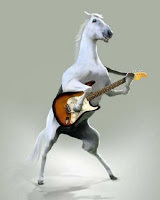 Rocking horse.Rocking horse.Rocking chair.Rocking stocking.Rocky road.Precious rock.Rock layer.Solid rock.Tick, tock, get ready to rock.Rick.Rock, paper, scissors.Rockstar.Rock hammer.Rock climber.Dashed upon the rocks.Rock pool.With rocks on her fingers and rocks on her toes, she shall have blisters wherever she goes.Rock of ages and ages and ages. And ages.
Rocking horse.Rocking horse.Rocking chair.Rocking stocking.Rocky road.Precious rock.Rock layer.Solid rock.Tick, tock, get ready to rock.Rick.Rock, paper, scissors.Rockstar.Rock hammer.Rock climber.Dashed upon the rocks.Rock pool.With rocks on her fingers and rocks on her toes, she shall have blisters wherever she goes.Rock of ages and ages and ages. And ages.
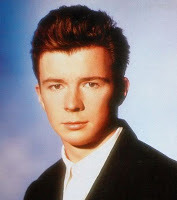 Rick.Rocky Mountain High.Rocky Horror Show.A rock and a hard place.Glam rock.Rock bottom.Rocky Balboa.Jailhouse rock.You’re my rock.100 ways with one word? I must be off my rocker.Rocking, rolling, riding, out along the bay, all bound for morning town, many miles away.Hard Rock Cafe.Roxanne.Rocky Raccoon.
Rick.Rocky Mountain High.Rocky Horror Show.A rock and a hard place.Glam rock.Rock bottom.Rocky Balboa.Jailhouse rock.You’re my rock.100 ways with one word? I must be off my rocker.Rocking, rolling, riding, out along the bay, all bound for morning town, many miles away.Hard Rock Cafe.Roxanne.Rocky Raccoon.
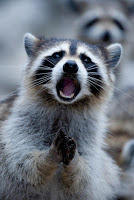 Rocky RaccoonIt's hard, being a rock.The Rock stars in "Another Bad Movie".Rock up.Rock god.Rock me, Amadeus.How much rock would Woodstock stock if Woodstock could stock rock?A flock of rocks.Rock, stone, pebble, grit, gravel, sand.Bedrock.Shamrock.Mary Mary, quite contrary, how is your garden rockery? With silver bells and cockle shells and a splendid set of crockery.Did stone age women wear f-rocks?Do rockhopper penguins wear clodhopper shoes? Get your rocks off, get your rocks off, honey. 20% off rocks today.Rocket.
Rocky RaccoonIt's hard, being a rock.The Rock stars in "Another Bad Movie".Rock up.Rock god.Rock me, Amadeus.How much rock would Woodstock stock if Woodstock could stock rock?A flock of rocks.Rock, stone, pebble, grit, gravel, sand.Bedrock.Shamrock.Mary Mary, quite contrary, how is your garden rockery? With silver bells and cockle shells and a splendid set of crockery.Did stone age women wear f-rocks?Do rockhopper penguins wear clodhopper shoes? Get your rocks off, get your rocks off, honey. 20% off rocks today.Rocket.
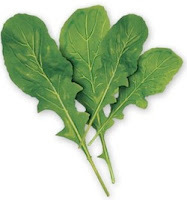 Rocket.Rocketeer… rocket there. Ride a rocket, everywhere.Rock slide.You call that rock? What a crock. Why did you set yourself this challenge? It’s almost impossible. But you can do this. You’re an author. You set yourself difficult word challenges every day, and you rise to them with tricks like added alliteration and internal rhyme all the time, so come on. Keep going. Don’t forget to think catchy. Think commercial. Think great to read aloud, like rolling a sweet around your mouth. You can do this. You rock.Rockin’ Robin.Is this even how you spell ‘rock’? It’s starting to look weird and between you and me I’m beginning to doubt my own existence. Rok? Rokk? Wrock? Throw a rock upon the ground. Hit a number, hop around. What am I…? Hopscotch.If you hide a rock in that snowball, I’ll hide my fist in your face.What rock did you crawl out from under?Ayer’s Rock, actually, sport.
Rocket.Rocketeer… rocket there. Ride a rocket, everywhere.Rock slide.You call that rock? What a crock. Why did you set yourself this challenge? It’s almost impossible. But you can do this. You’re an author. You set yourself difficult word challenges every day, and you rise to them with tricks like added alliteration and internal rhyme all the time, so come on. Keep going. Don’t forget to think catchy. Think commercial. Think great to read aloud, like rolling a sweet around your mouth. You can do this. You rock.Rockin’ Robin.Is this even how you spell ‘rock’? It’s starting to look weird and between you and me I’m beginning to doubt my own existence. Rok? Rokk? Wrock? Throw a rock upon the ground. Hit a number, hop around. What am I…? Hopscotch.If you hide a rock in that snowball, I’ll hide my fist in your face.What rock did you crawl out from under?Ayer’s Rock, actually, sport.
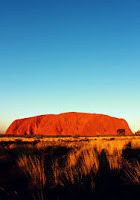 Red rock.I am a rock, I am an island.Rock dweller.Number 80? What rock have you been hiding under?School of hard rocks.Chock-a-block, full of rocks: a giant’s hole-y walking socks.River bed rocks, so slimy and wet. Off with your socks, paddle in, go get.Michelle, meet enormous house spider. Enormous house spider, meet heavy rock. True story.‘Hey, big human - that’s my home. Leave my rock, go find your own.’Rough rock. Tough rock. Made of stronger stuff rock.Rock carving.Does a statue have a heart of stone? (Okay, that didn’t contain ‘rock’ but I love it so I’ll go to 101).Curl up your fingers. What have you got? A fist that’s hard and round as a rock.I named my dog Rock. He won’t shift. I should’ve called him Rover.Moon rock. Space rock. Space ROCKS.Saw this sign at a car boot sale: ‘RARE ROCK, FIFTY QUID’. Thought, ‘Can’t fail.’ Traded rare rock for my cow. Hope to grow a beanstalk now.
Red rock.I am a rock, I am an island.Rock dweller.Number 80? What rock have you been hiding under?School of hard rocks.Chock-a-block, full of rocks: a giant’s hole-y walking socks.River bed rocks, so slimy and wet. Off with your socks, paddle in, go get.Michelle, meet enormous house spider. Enormous house spider, meet heavy rock. True story.‘Hey, big human - that’s my home. Leave my rock, go find your own.’Rough rock. Tough rock. Made of stronger stuff rock.Rock carving.Does a statue have a heart of stone? (Okay, that didn’t contain ‘rock’ but I love it so I’ll go to 101).Curl up your fingers. What have you got? A fist that’s hard and round as a rock.I named my dog Rock. He won’t shift. I should’ve called him Rover.Moon rock. Space rock. Space ROCKS.Saw this sign at a car boot sale: ‘RARE ROCK, FIFTY QUID’. Thought, ‘Can’t fail.’ Traded rare rock for my cow. Hope to grow a beanstalk now.
 A stone.'Who threw that rock? Was it you?' 'No, I threw a kangaroo.'Holding a rock is like holding a piece of history. A really boring, grey piece when nothing much happened.If mum won’t let you keep a pet, keep a rock, the best pet yet. Rocks are quiet, rocks are cheap. Rocks spend all their time asleep.They puts rocks in boats, but dem boats still floats.What’s big, red and eats rocks? The big, red rock eater.Sticks and stones may break my bones, but rocks will really squish me.Race you to the rock and back. Which rock? The big grey one. They’re all big and grey. GO! Take a rock and draw on eyes. Instantly the rock looks wise. Bonus rock! Free rock with every 100 nonsensical rock word plays created! Enjoy your free rock.This is just stage one, where stories and books start, all thanks to some story chasing, idea hunting, thesaurus loving buffoon who just cannot help mucking about with words, glorious words. Go ahead, try making all books without writers. Meanwhile, I think I'll just carry on digging.
A stone.'Who threw that rock? Was it you?' 'No, I threw a kangaroo.'Holding a rock is like holding a piece of history. A really boring, grey piece when nothing much happened.If mum won’t let you keep a pet, keep a rock, the best pet yet. Rocks are quiet, rocks are cheap. Rocks spend all their time asleep.They puts rocks in boats, but dem boats still floats.What’s big, red and eats rocks? The big, red rock eater.Sticks and stones may break my bones, but rocks will really squish me.Race you to the rock and back. Which rock? The big grey one. They’re all big and grey. GO! Take a rock and draw on eyes. Instantly the rock looks wise. Bonus rock! Free rock with every 100 nonsensical rock word plays created! Enjoy your free rock.This is just stage one, where stories and books start, all thanks to some story chasing, idea hunting, thesaurus loving buffoon who just cannot help mucking about with words, glorious words. Go ahead, try making all books without writers. Meanwhile, I think I'll just carry on digging.
Michelle Robinson's latest book, 'The Forgetful Knight', illustrated by Fred Blunt, publishes with Dial Books for Young Readers in July 2016.
I was busy minding my own business when I found myself copied in on a (non-publishing) person’s question to an illustrator: “Do you think we could just make books without writers now?” The illustrator was just as astonished as me.
Talk about putting the twit in Twitter. Zero marks for knowing your audience, minus ten for understanding picture book chemistry, straight to hell for underestimating the art of the author. That's right, ART.
 A few snippets from my notebooks.Just because the writing process doesn't lend itself so readily to showboating, doesn't mean we're not crafting away like billy-o. A snapshot of a scribbly, crosshatched notebook may not be as visually pleasing as a sketchbook, neither is it as simple to interpret, but us writers have some serious skills. It's harder to prove it, but then we shouldn't have to.
A few snippets from my notebooks.Just because the writing process doesn't lend itself so readily to showboating, doesn't mean we're not crafting away like billy-o. A snapshot of a scribbly, crosshatched notebook may not be as visually pleasing as a sketchbook, neither is it as simple to interpret, but us writers have some serious skills. It's harder to prove it, but then we shouldn't have to.We create heroes - and not just on the page. Read our words aloud and you become a joy conjurer, memory maker, child whisperer. We weave the words whispered into waiting ears. " We are the music makers and we are the dreamers of dreams." Perhaps the Twitter twit could do without the likes of O'Shaughnessy, but I'd rather not.
 'Please don't mock my rock.'
'Please don't mock my rock.'So anyway, I thought I'd lay myself bare to ridicule and failure and attempt to showboat.
Finding a story is a bit like finding a gem. In order to dig one out, you must first dig your way through a lot crappy rock. But us writers can't find that gem, can't weave the magic words, without first creating the crappy rock. All of it. From scratch. So here I am, starting from scratch, brainstorming 100 different ways with just one word: ROCK.
ONE HUNDRED WAYS WITH ROCK
 Rockabilly & RockabennyRock on (Tommy).Rock 'n' roll. Rollin' rock. Gathers pace and just can't stop.Rock music.Rock around the clock.Rockabilly.Rockabetty.Rockabenny, too. I like a rockabilly band, how about you?Rockabilly goats gruff.Rockabye baby, on the treetop. Call social services, this must stop.Rocks in your socks.Stick of rock. Stuck of rock. Stack of rock. Rock stock.Crocodile rock.Rockodile.Get your rocks off. (What an odd phrase, honey. Write it down now, need a hundred, wow.)Rocks in your head, heavy as lead. Rocks on your head instead? SPLAT. You're dead.Rock hard.Rock solid.Rock steady crew.Rock teddy in your beddy, god bless you.On the rocks. Off the rocks. Over the rocks and far away.Rock buns. Mmm.Sit down, you’re rocking the boat.
Rockabilly & RockabennyRock on (Tommy).Rock 'n' roll. Rollin' rock. Gathers pace and just can't stop.Rock music.Rock around the clock.Rockabilly.Rockabetty.Rockabenny, too. I like a rockabilly band, how about you?Rockabilly goats gruff.Rockabye baby, on the treetop. Call social services, this must stop.Rocks in your socks.Stick of rock. Stuck of rock. Stack of rock. Rock stock.Crocodile rock.Rockodile.Get your rocks off. (What an odd phrase, honey. Write it down now, need a hundred, wow.)Rocks in your head, heavy as lead. Rocks on your head instead? SPLAT. You're dead.Rock hard.Rock solid.Rock steady crew.Rock teddy in your beddy, god bless you.On the rocks. Off the rocks. Over the rocks and far away.Rock buns. Mmm.Sit down, you’re rocking the boat.
 Rocking horse.Rocking horse.Rocking chair.Rocking stocking.Rocky road.Precious rock.Rock layer.Solid rock.Tick, tock, get ready to rock.Rick.Rock, paper, scissors.Rockstar.Rock hammer.Rock climber.Dashed upon the rocks.Rock pool.With rocks on her fingers and rocks on her toes, she shall have blisters wherever she goes.Rock of ages and ages and ages. And ages.
Rocking horse.Rocking horse.Rocking chair.Rocking stocking.Rocky road.Precious rock.Rock layer.Solid rock.Tick, tock, get ready to rock.Rick.Rock, paper, scissors.Rockstar.Rock hammer.Rock climber.Dashed upon the rocks.Rock pool.With rocks on her fingers and rocks on her toes, she shall have blisters wherever she goes.Rock of ages and ages and ages. And ages.
 Rick.Rocky Mountain High.Rocky Horror Show.A rock and a hard place.Glam rock.Rock bottom.Rocky Balboa.Jailhouse rock.You’re my rock.100 ways with one word? I must be off my rocker.Rocking, rolling, riding, out along the bay, all bound for morning town, many miles away.Hard Rock Cafe.Roxanne.Rocky Raccoon.
Rick.Rocky Mountain High.Rocky Horror Show.A rock and a hard place.Glam rock.Rock bottom.Rocky Balboa.Jailhouse rock.You’re my rock.100 ways with one word? I must be off my rocker.Rocking, rolling, riding, out along the bay, all bound for morning town, many miles away.Hard Rock Cafe.Roxanne.Rocky Raccoon.
 Rocky RaccoonIt's hard, being a rock.The Rock stars in "Another Bad Movie".Rock up.Rock god.Rock me, Amadeus.How much rock would Woodstock stock if Woodstock could stock rock?A flock of rocks.Rock, stone, pebble, grit, gravel, sand.Bedrock.Shamrock.Mary Mary, quite contrary, how is your garden rockery? With silver bells and cockle shells and a splendid set of crockery.Did stone age women wear f-rocks?Do rockhopper penguins wear clodhopper shoes? Get your rocks off, get your rocks off, honey. 20% off rocks today.Rocket.
Rocky RaccoonIt's hard, being a rock.The Rock stars in "Another Bad Movie".Rock up.Rock god.Rock me, Amadeus.How much rock would Woodstock stock if Woodstock could stock rock?A flock of rocks.Rock, stone, pebble, grit, gravel, sand.Bedrock.Shamrock.Mary Mary, quite contrary, how is your garden rockery? With silver bells and cockle shells and a splendid set of crockery.Did stone age women wear f-rocks?Do rockhopper penguins wear clodhopper shoes? Get your rocks off, get your rocks off, honey. 20% off rocks today.Rocket.
 Rocket.Rocketeer… rocket there. Ride a rocket, everywhere.Rock slide.You call that rock? What a crock. Why did you set yourself this challenge? It’s almost impossible. But you can do this. You’re an author. You set yourself difficult word challenges every day, and you rise to them with tricks like added alliteration and internal rhyme all the time, so come on. Keep going. Don’t forget to think catchy. Think commercial. Think great to read aloud, like rolling a sweet around your mouth. You can do this. You rock.Rockin’ Robin.Is this even how you spell ‘rock’? It’s starting to look weird and between you and me I’m beginning to doubt my own existence. Rok? Rokk? Wrock? Throw a rock upon the ground. Hit a number, hop around. What am I…? Hopscotch.If you hide a rock in that snowball, I’ll hide my fist in your face.What rock did you crawl out from under?Ayer’s Rock, actually, sport.
Rocket.Rocketeer… rocket there. Ride a rocket, everywhere.Rock slide.You call that rock? What a crock. Why did you set yourself this challenge? It’s almost impossible. But you can do this. You’re an author. You set yourself difficult word challenges every day, and you rise to them with tricks like added alliteration and internal rhyme all the time, so come on. Keep going. Don’t forget to think catchy. Think commercial. Think great to read aloud, like rolling a sweet around your mouth. You can do this. You rock.Rockin’ Robin.Is this even how you spell ‘rock’? It’s starting to look weird and between you and me I’m beginning to doubt my own existence. Rok? Rokk? Wrock? Throw a rock upon the ground. Hit a number, hop around. What am I…? Hopscotch.If you hide a rock in that snowball, I’ll hide my fist in your face.What rock did you crawl out from under?Ayer’s Rock, actually, sport.
 Red rock.I am a rock, I am an island.Rock dweller.Number 80? What rock have you been hiding under?School of hard rocks.Chock-a-block, full of rocks: a giant’s hole-y walking socks.River bed rocks, so slimy and wet. Off with your socks, paddle in, go get.Michelle, meet enormous house spider. Enormous house spider, meet heavy rock. True story.‘Hey, big human - that’s my home. Leave my rock, go find your own.’Rough rock. Tough rock. Made of stronger stuff rock.Rock carving.Does a statue have a heart of stone? (Okay, that didn’t contain ‘rock’ but I love it so I’ll go to 101).Curl up your fingers. What have you got? A fist that’s hard and round as a rock.I named my dog Rock. He won’t shift. I should’ve called him Rover.Moon rock. Space rock. Space ROCKS.Saw this sign at a car boot sale: ‘RARE ROCK, FIFTY QUID’. Thought, ‘Can’t fail.’ Traded rare rock for my cow. Hope to grow a beanstalk now.
Red rock.I am a rock, I am an island.Rock dweller.Number 80? What rock have you been hiding under?School of hard rocks.Chock-a-block, full of rocks: a giant’s hole-y walking socks.River bed rocks, so slimy and wet. Off with your socks, paddle in, go get.Michelle, meet enormous house spider. Enormous house spider, meet heavy rock. True story.‘Hey, big human - that’s my home. Leave my rock, go find your own.’Rough rock. Tough rock. Made of stronger stuff rock.Rock carving.Does a statue have a heart of stone? (Okay, that didn’t contain ‘rock’ but I love it so I’ll go to 101).Curl up your fingers. What have you got? A fist that’s hard and round as a rock.I named my dog Rock. He won’t shift. I should’ve called him Rover.Moon rock. Space rock. Space ROCKS.Saw this sign at a car boot sale: ‘RARE ROCK, FIFTY QUID’. Thought, ‘Can’t fail.’ Traded rare rock for my cow. Hope to grow a beanstalk now.
 A stone.'Who threw that rock? Was it you?' 'No, I threw a kangaroo.'Holding a rock is like holding a piece of history. A really boring, grey piece when nothing much happened.If mum won’t let you keep a pet, keep a rock, the best pet yet. Rocks are quiet, rocks are cheap. Rocks spend all their time asleep.They puts rocks in boats, but dem boats still floats.What’s big, red and eats rocks? The big, red rock eater.Sticks and stones may break my bones, but rocks will really squish me.Race you to the rock and back. Which rock? The big grey one. They’re all big and grey. GO! Take a rock and draw on eyes. Instantly the rock looks wise. Bonus rock! Free rock with every 100 nonsensical rock word plays created! Enjoy your free rock.This is just stage one, where stories and books start, all thanks to some story chasing, idea hunting, thesaurus loving buffoon who just cannot help mucking about with words, glorious words. Go ahead, try making all books without writers. Meanwhile, I think I'll just carry on digging.
A stone.'Who threw that rock? Was it you?' 'No, I threw a kangaroo.'Holding a rock is like holding a piece of history. A really boring, grey piece when nothing much happened.If mum won’t let you keep a pet, keep a rock, the best pet yet. Rocks are quiet, rocks are cheap. Rocks spend all their time asleep.They puts rocks in boats, but dem boats still floats.What’s big, red and eats rocks? The big, red rock eater.Sticks and stones may break my bones, but rocks will really squish me.Race you to the rock and back. Which rock? The big grey one. They’re all big and grey. GO! Take a rock and draw on eyes. Instantly the rock looks wise. Bonus rock! Free rock with every 100 nonsensical rock word plays created! Enjoy your free rock.This is just stage one, where stories and books start, all thanks to some story chasing, idea hunting, thesaurus loving buffoon who just cannot help mucking about with words, glorious words. Go ahead, try making all books without writers. Meanwhile, I think I'll just carry on digging.Michelle Robinson's latest book, 'The Forgetful Knight', illustrated by Fred Blunt, publishes with Dial Books for Young Readers in July 2016.
Published on May 23, 2016 01:08
May 8, 2016
Picture Books Aren't Just For Reading - Lynne Garner
I’ve been writing education based articles for professionals who work with young children for a number of years now. So when I was asked to write a few activity based features linked to picture books I jumped at the chance.
First I needed to do a little research and find some books. Easy! I put a call out to my fellow picture book writers and as usual they came to my rescue. The three books I’ve based my features on so far are:
What Will Danny do Today?Written by Pippa Goodhart and Illustrated by Sam UsherPublished by Egmont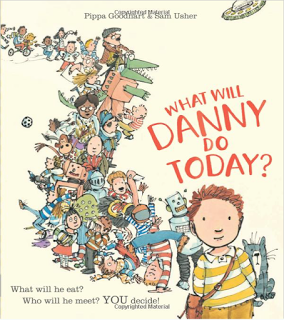
I Saw a SharkWritten by Moira Butterfield and illlustrated by Michael EmmersonPublished by Ginger Fox
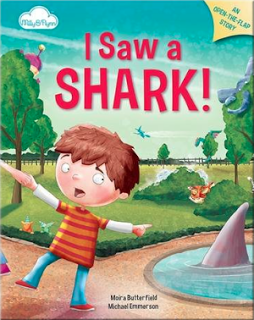
Who Woke the Baby?Written by Jane Clarke and iIllustrated by Charles FugePublished by Nosy Crow
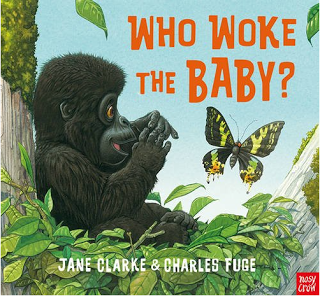
My next task was to read each of the books and come up with some activity ideas which would tie the story with at least one of the subject areas covered in schools. These areas are:
Personal, Social and Emotional Development (PSED)Literacy (L)Communication and Language (CL)Mathematics (M)Understanding the World (UW)Physical Development (PD)Expressive Arts and Design (EAD)
I also teach in this sector (on a part-time basis) and we often call this type of linking different activities embedding, so it's something I'm used to doing. As I read the books I could see there were lots opportunities for embedding. So here are just a few ideas I had:
Personal, Social and Emotional Development (PSED)
Encourage them to play group games linked to the book to support their understanding of respecting one anothers differences and the concept of sharing.
Literary The very act of reading and sharing a book is supporting their literacy skills.
Communication and LanguageAs you read ask lots of open questions and you'll be expanding their vocabulary and improving their use of language.
MathsAs you read encourage them to count things and notice the use of numbers in the text to support their math skills.
Understanding the WorldOnce you've shared the book learning about the real life animals that appear in them provides them with the opportunity to gain understanding of the world around them and provides them with the opportunity to show care and concern for living things and the environment.
Physical DevelopmentHandling a book and turning pages will support their small motor skills.
Expressive Arts and DesignEncourage them enjoy a themed art and craft session will support this area and encourage them to explore using different mediums plus supporting their PD as they use small tools.
I'm now hoping you can see that every picture book opens up a wealth of learning opportunities and that picture books aren't just for reading.
Regards
Lynne
Note: The features that used these books have or will appear in Practical Pre-school magazine which incorporates Child Care magazine. Both are a great source of information, creative ideas and resources for those who work in the Early Years Foundation Stage.
Now for a blatant plug - don't say I didn't warn you:
My latest short story collection Coyote Tales Retold is available on Amazon in ebook format. Also available Meet The Tricksters a collection of 18 short stories featuring Anansi the Trickster Spider, Brer Rabbit and Coyote is available as a paper back and an ebook.
I run the following online courses for Women On Writing:How to write A children's book and get published5 picture books in 5 weeks How to write a hobby-based how to book
First I needed to do a little research and find some books. Easy! I put a call out to my fellow picture book writers and as usual they came to my rescue. The three books I’ve based my features on so far are:
What Will Danny do Today?Written by Pippa Goodhart and Illustrated by Sam UsherPublished by Egmont

I Saw a SharkWritten by Moira Butterfield and illlustrated by Michael EmmersonPublished by Ginger Fox

Who Woke the Baby?Written by Jane Clarke and iIllustrated by Charles FugePublished by Nosy Crow

My next task was to read each of the books and come up with some activity ideas which would tie the story with at least one of the subject areas covered in schools. These areas are:
Personal, Social and Emotional Development (PSED)Literacy (L)Communication and Language (CL)Mathematics (M)Understanding the World (UW)Physical Development (PD)Expressive Arts and Design (EAD)
I also teach in this sector (on a part-time basis) and we often call this type of linking different activities embedding, so it's something I'm used to doing. As I read the books I could see there were lots opportunities for embedding. So here are just a few ideas I had:
Personal, Social and Emotional Development (PSED)
Encourage them to play group games linked to the book to support their understanding of respecting one anothers differences and the concept of sharing.
Literary The very act of reading and sharing a book is supporting their literacy skills.
Communication and LanguageAs you read ask lots of open questions and you'll be expanding their vocabulary and improving their use of language.
MathsAs you read encourage them to count things and notice the use of numbers in the text to support their math skills.
Understanding the WorldOnce you've shared the book learning about the real life animals that appear in them provides them with the opportunity to gain understanding of the world around them and provides them with the opportunity to show care and concern for living things and the environment.
Physical DevelopmentHandling a book and turning pages will support their small motor skills.
Expressive Arts and DesignEncourage them enjoy a themed art and craft session will support this area and encourage them to explore using different mediums plus supporting their PD as they use small tools.
I'm now hoping you can see that every picture book opens up a wealth of learning opportunities and that picture books aren't just for reading.
Regards
Lynne
Note: The features that used these books have or will appear in Practical Pre-school magazine which incorporates Child Care magazine. Both are a great source of information, creative ideas and resources for those who work in the Early Years Foundation Stage.
Now for a blatant plug - don't say I didn't warn you:
My latest short story collection Coyote Tales Retold is available on Amazon in ebook format. Also available Meet The Tricksters a collection of 18 short stories featuring Anansi the Trickster Spider, Brer Rabbit and Coyote is available as a paper back and an ebook.
I run the following online courses for Women On Writing:How to write A children's book and get published5 picture books in 5 weeks How to write a hobby-based how to book
Published on May 08, 2016 23:00
May 1, 2016
Picture Books To Get Children Talking, by Pippa Goodhart
Shouldn't children should sit and listen when a picture book is read to them? That’s certainly how children’s books used to work. Adults wrote, and perhaps read, them, and children received them, whole and pre-digested. But we’ve got cleverer at the games that can be played between story book and child in more recent times.
We all know that the best picture books give opportunities for young children to join-in with the storytelling. Think of the simple genius of Rod Campbell’s Dear Zoo in which the animals aren’t named in the text, and it’s for the child to open the flap and name the camel that’s ‘too grumpy’ and the frog that’s ‘too jumpy’ and so on. That clever leaving of story spaces to be filled by the child is a way to give small children a taste of being a story teller, and also gives them a feeling of ownership over the story; they’ve contributed vital parts to the whole story, and that’s powerful and fun! See Polly Dunbar’s PBD blog on the subject http://picturebookden.blogspot.co.uk/2013/02/chicken-or-egg-by-polly-dunbar.html
But here I want to consider picture books which get children doing a different kind of talking; talking about themselves.
I’ve recently become involved in the wonderful charity Home-Start. http://www.home-start.org.uk . Home-Start works by training volunteer parents to pair-up with families with young children who are struggling for some reason. Multiple births, post-natal depression, illness, bereavement, distance from friends ... there are multiple reasons why some struggle in that vital stage of family life. Home-Start volunteers give whatever help the parent wants. It may be taking the children out to give the parent a break, it might be listening to the parent and discussing things, it might be accompanying parent and child to family centre sessions, it might simply be doing the shopping or the washing up. But it will often involve talking with young children, or allowing time for the parent to have some ‘quality time’ with their child.
When there’s a family crisis, one vital thing which can get lost or forgotten is communication with young children. When people are preoccupied with problems, important ordinary conversations about everyday life might not happen. A shared book can give an occasion for conversation between parents or other adult carers and children. Even in families with no particularly pressing problems, we all know how you can ask a child what they did at school today, and the answer that comes back is often, “Nothing.” Sometimes it simply takes too much energy, or things are too complex for a child to explain, so children don’t tell what might be bothering or exciting or puzzling them. Of course parents might not be telling how they feel about things either.
I don’t know how far the ‘Sally is Being Bullied’ (I’ve made that title up) sort of book does help a child who is being bullied. It might, but my suspicion is that many children would react against something that labels their problem so bluntly. Besides, a book of that kind often doesn’t have a story, or, if it does, it’s a story steered around an agenda rather than coming from character. It won't be fun.

Since my ‘You Choose’ book, illustrated by Nick Sharratt, was published twelve years ago, I’ve heard again and again from parents and therapists how that book has proved a fun way to get children talking about themselves, as well as simply talking and improving their vocabularies. With that in mind, I wrote my new book ‘What Will Danny Do Today?’, illustrated by Sam Usher.
What Will Danny Do Today? follows a child, Danny, through a day, from getting up and deciding what to wear, off to school where lots of options offer themselves, to after school fun with Dad, and finally a choice of book for bedtime. Each spread is busy with possibilities. So, for example, when going to school, there are ordinary options, the child walking with Mum and a baby sibling in a pushchair, there are the more unusual options, going to school via a zip-wire from your bedroom window to the school entrance, and there is also, if you notice, the shy child, alone at the school gate and not sure about stepping through it. Which of those does the child reader identify with? Or wish that they were like that one? This is a book that can be played purely for laughs. Or it can be played straight. Or it can prompt discussions about aliens or detectives or stealing or whether one should eat ice-cream for breakfast, or much more.
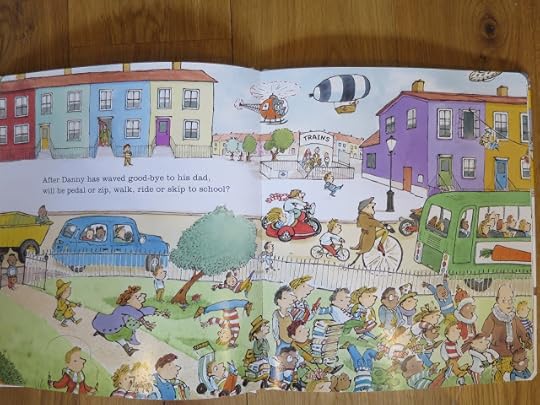
Which other books to get children talking about themselves can you all recommend?
Published on May 01, 2016 16:30
April 25, 2016
Authors and money– Panama anyone? Moira Butterfield
A practical ‘author housekeeping’ blog today, folks. I’m assuming that, just for once, you don’t need my advice on rhythm, rhyme, teddy bear usage etc.
Instead I’d like to comment on the news this week.
“What?” I hear you say. “Has this blog changed tack? She’ll be mentioning celebrity shenanegins in a minute!”
Don’t worry. I have no intention of revealing the many secret shocking things I know about famous people.
It was the Panama leaks that got me thinking, specifically the news that the Duchess of York had some sort of hidden offshore company to store the earnings of her ‘Little Red’ picture books. Er…I can’t remember them, to be honest, but nice to hear she made a few quid, if she did.
(Aside - You never know with newspaper reports that celebs have earned loads from writing. Occasionally I’m told such reports might have a tiny touch of PR and therefore may not be entirely accurate…).
But anyway, the papers went on to describe the Duchess’s finances as ‘chaotic’, so that is more proof that she’s a creative professional, surely! Bless.
But we really mustn’t be chaotic, people. Most writers are some way down the earning tree and therefore have to pay tax in the normal way, and that’s where I can help with some sage advice based on my own experience. You may spend your days having fabulous creative thoughts, but a small portion of your time must be spent getting your accounts up together if you earn money from writing.
The UK tax people have been very interested in me over the years, and that’s good to know, isn’t it? As a self-employed author I may be a small-scale ‘sole trader’ but I could be stashing away the loot, after all. I've been tax investigated twice. On both occasions I had just had a baby and my earnings had plummeted. My accountant thought that might have triggered the investigations, though it's impossible to find out. Perhaps I was hiding earnings away in the nappy bin? They had a duty to find out.
They could just as easily swing their never-sleeping eye over to you, and if you live in countries elsewhere I expect you have your own version of our UK tax friends.
For the first investigation I did not have investigation insurance, and it cost me £1,000 in accountancy fees. During a UK investigation you are interviewed more than once in a small room, like the sort of room you see on crime shows, and you need your accountant with you - and that costs money.
First piece of advice: In the UK you must get yourself investigation insurance if you have self-employment earnings. Check your position in other countries. You can get it from an accountant or, in the UK, from the Society of Authors if you are a member. Very weirdly, days after I wrote this blog I got an email from the SoA - if you want to go on their scheme for next year and you are a member you have to join by April 27th and it costs £12.
Second piece of advice: You must keep your author earnings accounts up together and, unless you keep really accurate weekly records of all your incomings and outgoings, keep your work earnings separate from your personal spending accounts in some way. In the UK the tax investigator will want to look at work accounts going back five years, and all your personal accounts, too. If you can’t separate the two easily it gets complicated. I do keep mine entirely separate, and it was still complicated. You must account for every payment that has gone into your personal account going back five years. Unless you can prove otherwise it can be assumed to be work earnings you failed to declare. In other words, if Grandma once gave you a birthday cheque, for example, you may have to prove it came from her.
If you live in other countries, you may not get these investigations, but I'm sure the advice still holds true - Keep your work accounts tidy.
The thorough UK taxman did catch me breaking the rules.
In the first investigation he found one thing wrong - a packet of Opal Fruits and a £4.50 toy golf set on a petrol receipt that I had put through my accounts. I was rightly given a telling-off.
In the second investigation the tax lady said I’d claimed too much for travel because ‘writers don’t go out’, and though I’d recently written a series of round-Britain history books she wasn't having it so I was fined a small amount. If I wanted to argue, she pointed out, she would take it upon herself to fine me for an assumed five years of over-claimed travel. So best not to. I can't tell you how much travel UK authors are actually allowed to put into their accounts, by the way. Nobody can tell you. It's up to a tax investigator to judge. Perhaps I should have offered mine an Opal Fruit...
So listen up. If you want to stay calm enough to write, you must keep evidence of your earnings in perfect order, ready for anyone to see.
Don’t neglect this dull and tedious side of writing.
Unless your assets are offshore, in which case don't worry. You can do what the **** you like.
Moira Butterfield @moiraworldwww.moirabutterfield.co.uk
Latest picture books: The 'Everybody Feels..." series by QED I Saw a Shark - Ginger Fox
Instead I’d like to comment on the news this week.
“What?” I hear you say. “Has this blog changed tack? She’ll be mentioning celebrity shenanegins in a minute!”
Don’t worry. I have no intention of revealing the many secret shocking things I know about famous people.
It was the Panama leaks that got me thinking, specifically the news that the Duchess of York had some sort of hidden offshore company to store the earnings of her ‘Little Red’ picture books. Er…I can’t remember them, to be honest, but nice to hear she made a few quid, if she did.
(Aside - You never know with newspaper reports that celebs have earned loads from writing. Occasionally I’m told such reports might have a tiny touch of PR and therefore may not be entirely accurate…).
But anyway, the papers went on to describe the Duchess’s finances as ‘chaotic’, so that is more proof that she’s a creative professional, surely! Bless.
But we really mustn’t be chaotic, people. Most writers are some way down the earning tree and therefore have to pay tax in the normal way, and that’s where I can help with some sage advice based on my own experience. You may spend your days having fabulous creative thoughts, but a small portion of your time must be spent getting your accounts up together if you earn money from writing.
The UK tax people have been very interested in me over the years, and that’s good to know, isn’t it? As a self-employed author I may be a small-scale ‘sole trader’ but I could be stashing away the loot, after all. I've been tax investigated twice. On both occasions I had just had a baby and my earnings had plummeted. My accountant thought that might have triggered the investigations, though it's impossible to find out. Perhaps I was hiding earnings away in the nappy bin? They had a duty to find out.
They could just as easily swing their never-sleeping eye over to you, and if you live in countries elsewhere I expect you have your own version of our UK tax friends.
For the first investigation I did not have investigation insurance, and it cost me £1,000 in accountancy fees. During a UK investigation you are interviewed more than once in a small room, like the sort of room you see on crime shows, and you need your accountant with you - and that costs money.
First piece of advice: In the UK you must get yourself investigation insurance if you have self-employment earnings. Check your position in other countries. You can get it from an accountant or, in the UK, from the Society of Authors if you are a member. Very weirdly, days after I wrote this blog I got an email from the SoA - if you want to go on their scheme for next year and you are a member you have to join by April 27th and it costs £12.
Second piece of advice: You must keep your author earnings accounts up together and, unless you keep really accurate weekly records of all your incomings and outgoings, keep your work earnings separate from your personal spending accounts in some way. In the UK the tax investigator will want to look at work accounts going back five years, and all your personal accounts, too. If you can’t separate the two easily it gets complicated. I do keep mine entirely separate, and it was still complicated. You must account for every payment that has gone into your personal account going back five years. Unless you can prove otherwise it can be assumed to be work earnings you failed to declare. In other words, if Grandma once gave you a birthday cheque, for example, you may have to prove it came from her.
If you live in other countries, you may not get these investigations, but I'm sure the advice still holds true - Keep your work accounts tidy.
The thorough UK taxman did catch me breaking the rules.
In the first investigation he found one thing wrong - a packet of Opal Fruits and a £4.50 toy golf set on a petrol receipt that I had put through my accounts. I was rightly given a telling-off.
In the second investigation the tax lady said I’d claimed too much for travel because ‘writers don’t go out’, and though I’d recently written a series of round-Britain history books she wasn't having it so I was fined a small amount. If I wanted to argue, she pointed out, she would take it upon herself to fine me for an assumed five years of over-claimed travel. So best not to. I can't tell you how much travel UK authors are actually allowed to put into their accounts, by the way. Nobody can tell you. It's up to a tax investigator to judge. Perhaps I should have offered mine an Opal Fruit...
So listen up. If you want to stay calm enough to write, you must keep evidence of your earnings in perfect order, ready for anyone to see.
Don’t neglect this dull and tedious side of writing.
Unless your assets are offshore, in which case don't worry. You can do what the **** you like.
Moira Butterfield @moiraworldwww.moirabutterfield.co.uk
Latest picture books: The 'Everybody Feels..." series by QED I Saw a Shark - Ginger Fox
Published on April 25, 2016 01:06
April 17, 2016
Writing Away (or Going Away to Write) by Malachy Doyle
I'm lucky, me. I have a study.
I also have a writing hut.
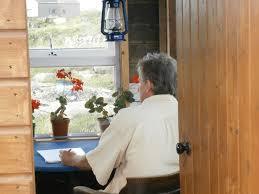
But I still find that some of the best ideas happen when I’m away.
When I started writing, over 20 years ago now, I went on a week-long course at Ty Newydd. It’s on the Lleyn Peninsula in Wales - and it’s a wonderful place to write.

The tutors were Kevin Crossley-Holland and Valerie Bloom and they were both fantastically encouraging. ‘You’ve got it, Malachy,’ they said. ‘Now go home and do it!’
So I did. And two of the stories I was working on that week became books (The Football Ghosts, 11 years later, and The Snuggle Sandwich, 14 years later!)
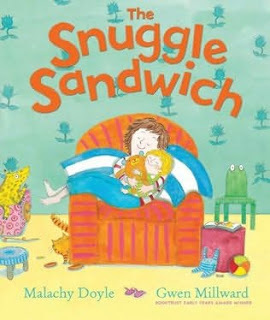
A year after that I got a bursary from the Arts Council of Northern Ireland and spent it on a week at the Tyrone Guthrie Centre in Annaghmakerrig, County Monaghan. Another superb place to write.

Three of the stories I was working on that week became books - Una and the Sea-Cloak, The King of the Birds and Moya, The Luck Child.
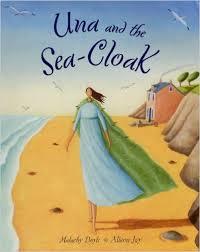
These days, when I go away, it’s generally to help other people write. I’ve been back to Ty Newydd many times, running courses, including with both Kevin and Valerie.
I’ve also led residential courses at Annaghmakerrig and at all three of the Arvon centres across England – courses for schoolchildren and for adults. It’s great to give back, to encourage, to inspire, to help people find their voice… And it’s wonderful to discover the occasional just-about-fully-formed-but-didn't-yet-know-it writer to whom you can say, ‘You’ve got it! Now go home and do it!’
At the Totleigh Barton Arvon centre in Devon I was teaching a new writer for children, Anthea Simmons. She wrote her first picture book story ‘Share!’ there. It’s gone on to be published in many languages, and already has two sequels.
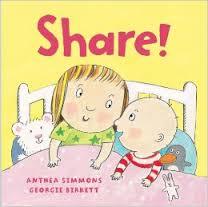
In the same place, on a course I taught with Vivian French, we helped a new and very exciting young writer by the name of Michelle Robinson find her picture-book voice. (She's been known to lurk hereabouts.)
And just the other day I heard from the illustrator Guy Parker-Rees that a character he developed on an Arvon course I was teaching a while back has not only become a book, but has sold to Brown Bag films for development as an animation series.
Running courses helps my own writing too. I generally sit in on the sessions of my co-tutors, often finding myself inspired to write things I’d never have written at home. I was recently teaching an Arvon schools course with Sheena Wilkinson, a fellow Northern Irish writer, and wrote a story in one of her sessions (in fifteen minutes flat, as you do!) that, fingers crossed, will soon be a picture book.
So, yes, I’m a big fan of writing courses and of the idea of going away to write. It's a excellent way to shift gear, to see things differently, to try a new approach or a whole new genre and to find the confidence to follow where it leads...
And if anyone’s tempted, I’m leading one at The Hurst (the newly-refurbished and delightful Arvon centre in Shropshire) at the end of May.

It’s a Tutored Retreat, so rather than running workshops, I’ll be available all week, with my co-tutor, the very excellent Narinder Dhami, to help you with your writing. Whatever you’re working on – from picture books to young adult, it’ll be a great place to find inspiration, to write and to develop as a writer. And maybe, hopefully, like me, you’ll get a book or two out of it. Arvon tell me there are still some places left, and that there's a possibility of bursaries for those who can’t afford the full fee. Oh, and our special guest on the Wednesday night is the superb Geraldine McCaughrean – not to be missed.
So has anyone else any suggestions as to other good places to go away and write. What works for you, and why?
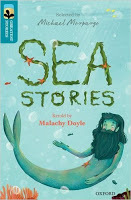 Malachy's latest book is Sea Stories, published by OUP in their series
Malachy's latest book is Sea Stories, published by OUP in their series'The Greatest Stories' (Oxford Reading Tree: Treetops), May 2016
Published on April 17, 2016 23:48



